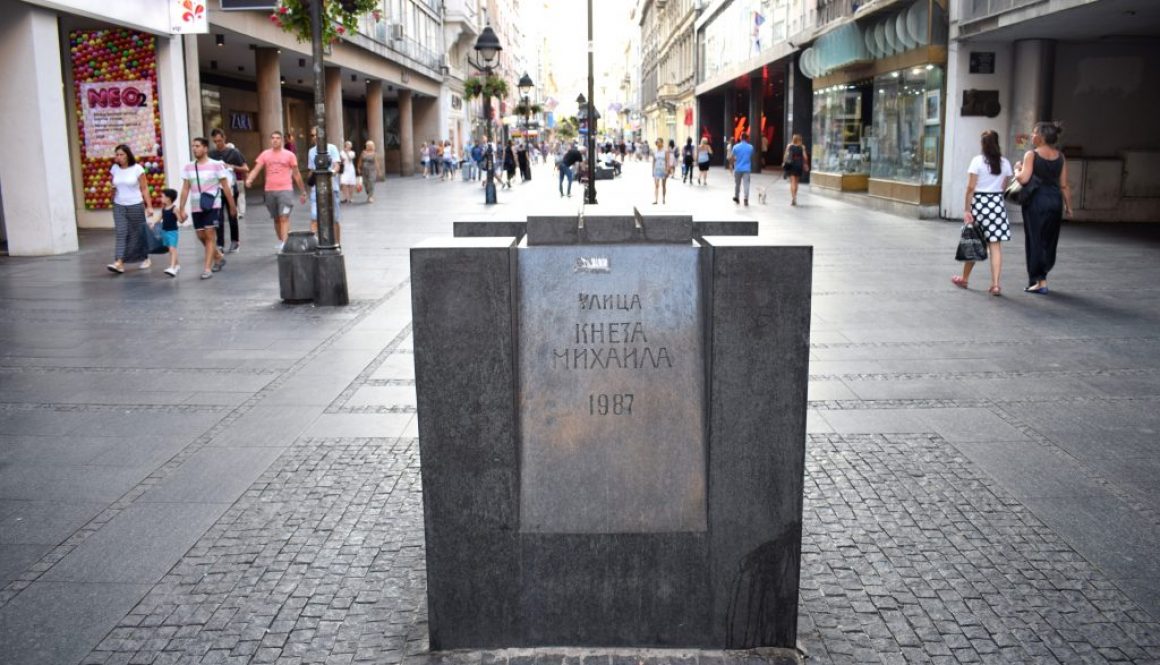A Walk Down Belgrade’s Knez Mihailova Street
Knez Mihailova is Belgrade’s central pedestrian street containing the city’s best 19th century architecture. Busy day and night and filled with cafes, restaurants, bookshops and museums, a visit to Belgrade is incomplete without a walk down this avenue.
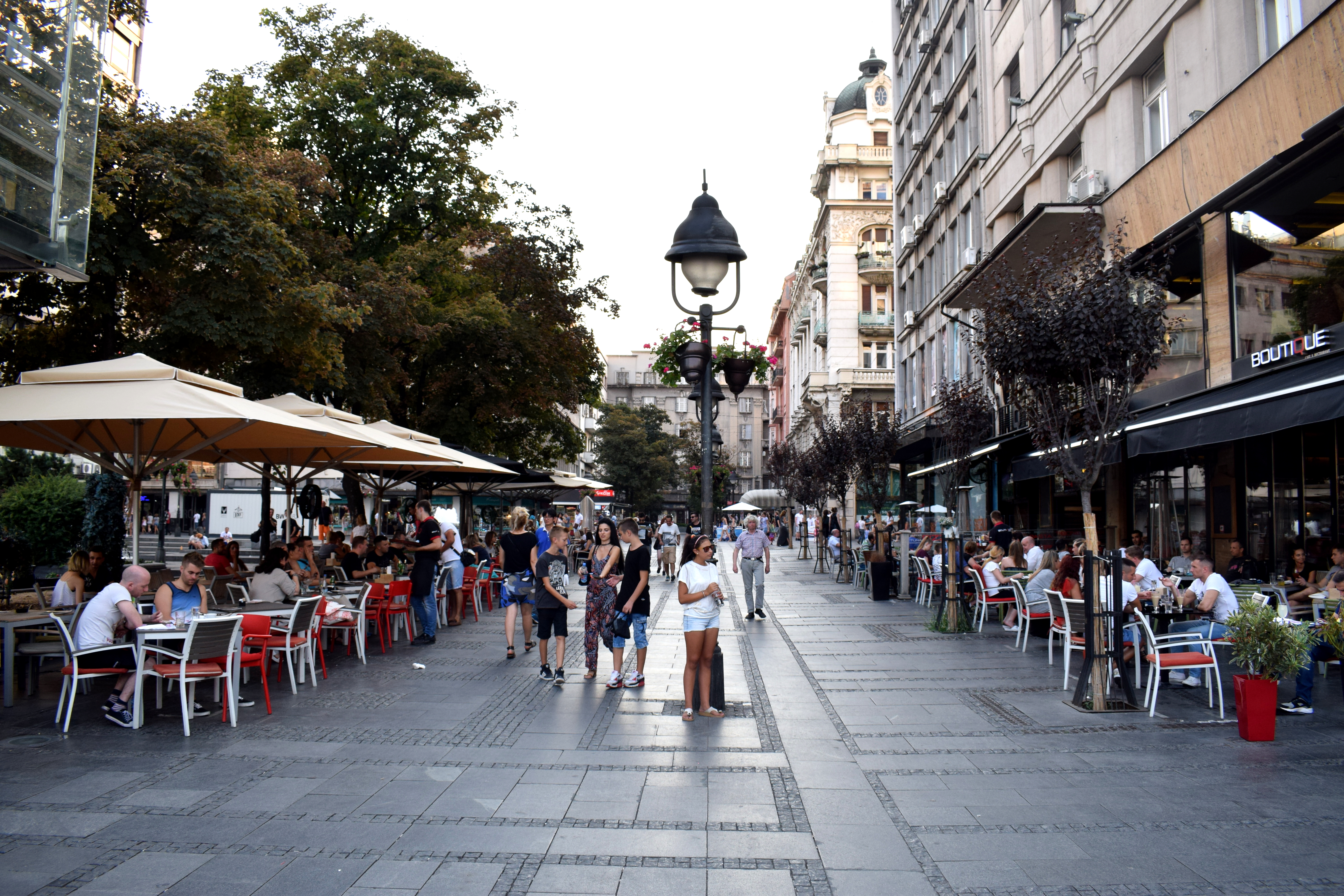 For much of the 20th century the street was open to traffic and parking, despite being one of the main streets of Belgrade. In 1987 the city decided to pedestrianize it, and since then it has become the central symbol of Belgrade.
For much of the 20th century the street was open to traffic and parking, despite being one of the main streets of Belgrade. In 1987 the city decided to pedestrianize it, and since then it has become the central symbol of Belgrade.
The easiest way to get to Knez Mihailova street is to meet at Republic Square where you will find Serbia’s national museum and national theatre, along with a statue to Prince Mihailo, erected in 1882.
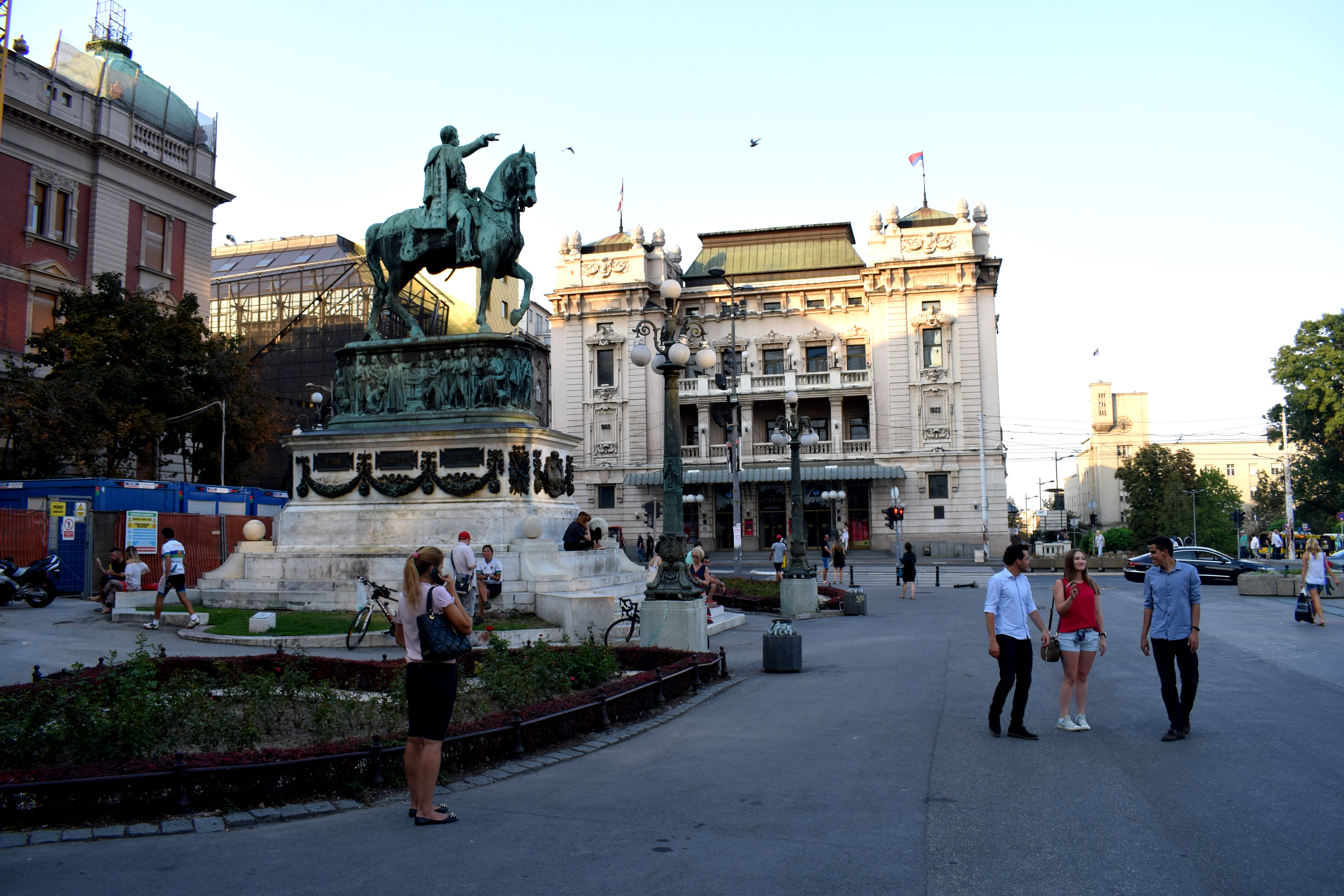 Prince Mihailo Obrenovic ruled Serbia from 1839-1842 and from 1860-1868. He was assassinated in 1868 when he and his wife were strolling through a park in Belgrade. The assassins were never discovered, but the rival Karadjordjevic dynasty was suspected to be behind the attack.
Prince Mihailo Obrenovic ruled Serbia from 1839-1842 and from 1860-1868. He was assassinated in 1868 when he and his wife were strolling through a park in Belgrade. The assassins were never discovered, but the rival Karadjordjevic dynasty was suspected to be behind the attack.
Prince Mihailo Obrenovic had plans to forge a Balkan alliance during the 19th century between the Bulgarians, Albanians, Greeks and Romanians that remained under Ottoman rule. The goal was to have these subjected nations coordinate their revolts against the Ottoman Empire instead of relying on individual revolts. After a coordinated uprising against the Ottoman Empire, a Balkan Federation would be formed. His assassination in 1868 thwarted these plans.
Today his statue is a favorite meeting point among Belgraders. When they meet in the center of the city they say ‘kod konja’ which means ‘by the horse.’
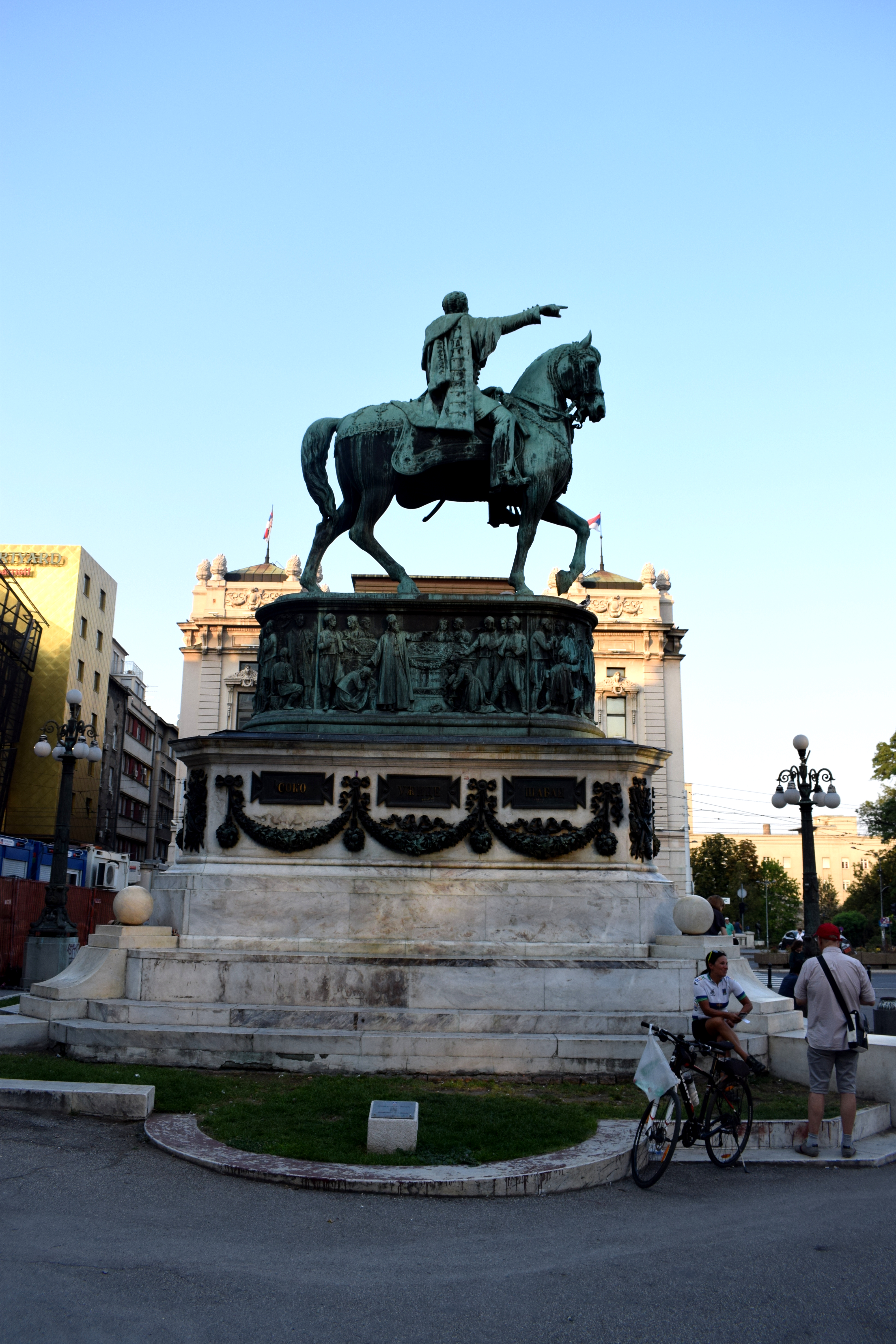 Serbia’s national museum is also located on Republic Square. The building was constructed in 1903 and recently renovated, although construction was still going on when I visited.
Serbia’s national museum is also located on Republic Square. The building was constructed in 1903 and recently renovated, although construction was still going on when I visited.
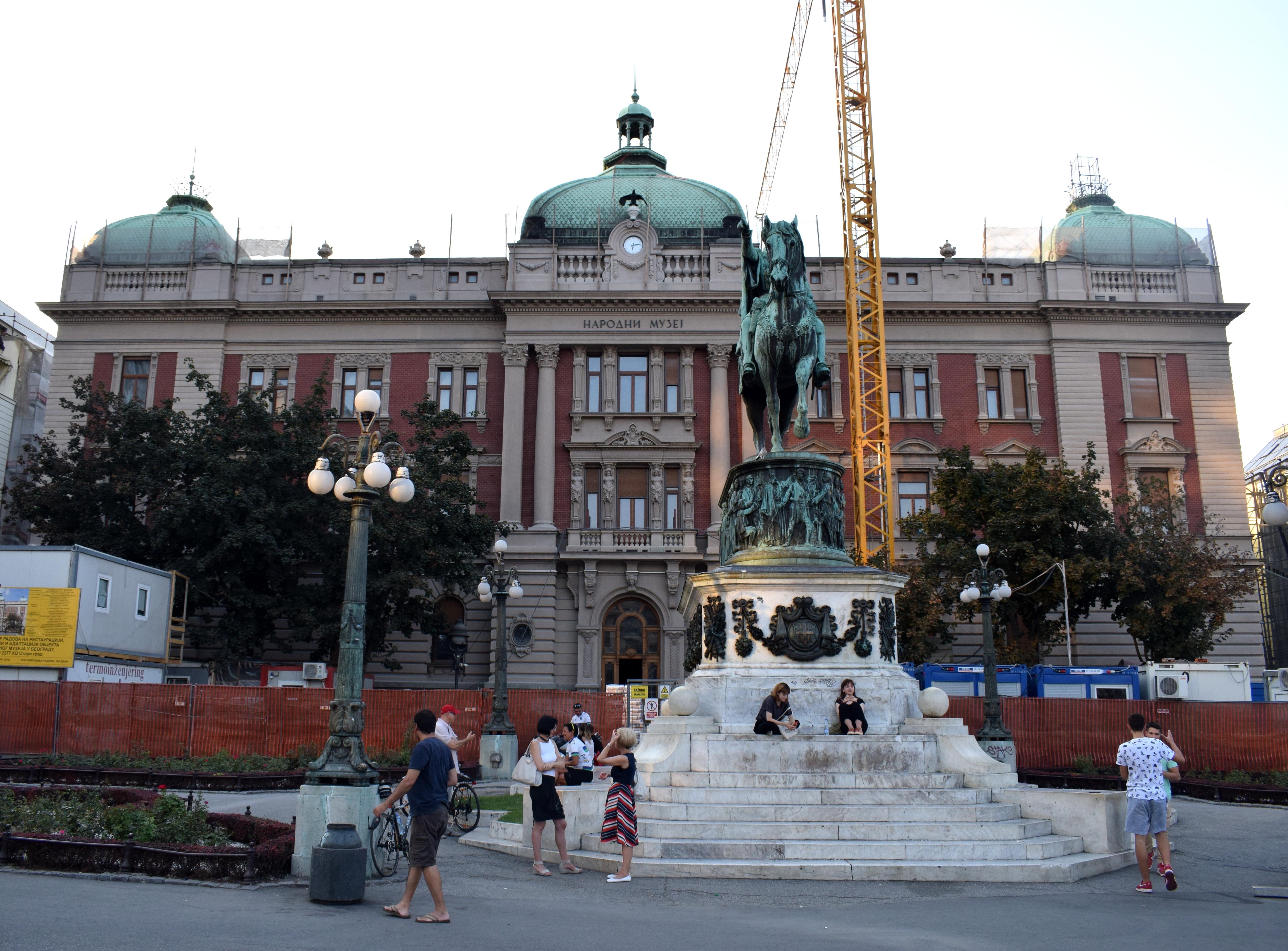 Belgrade is a slightly chaotic city when it comes to architecture. You have beautiful 19th century buildings juxtaposed against grey socialist buildings juxtaposed against modern 21st glass constructions.
Belgrade is a slightly chaotic city when it comes to architecture. You have beautiful 19th century buildings juxtaposed against grey socialist buildings juxtaposed against modern 21st glass constructions.
The city was heavily damaged in WWII and much of the city’s old architecture never recoverd. When you a see a socialist building in the center, it often means an older, more beautiful building stood there before it that was destroyed in WWII.
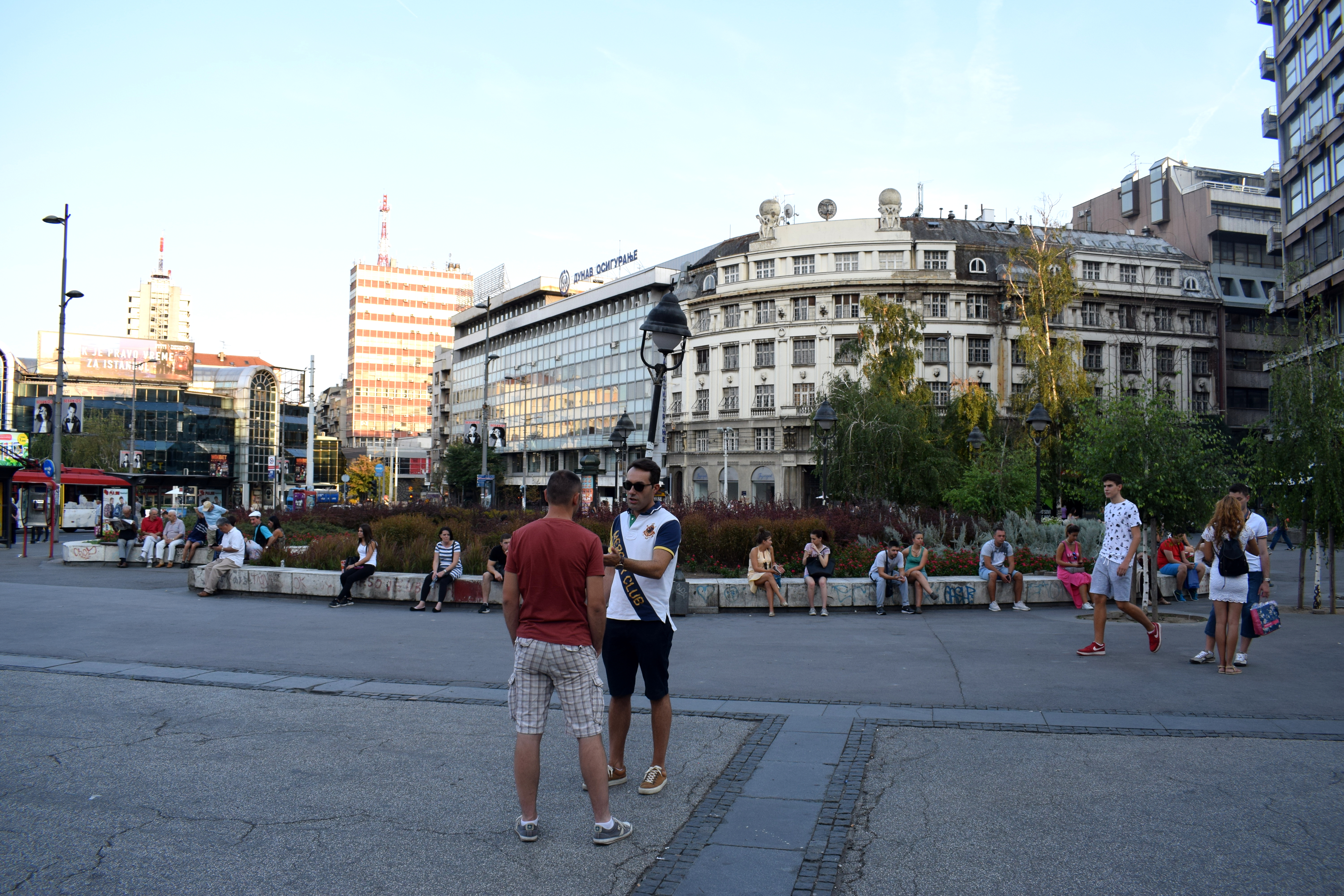 Thankfully most of Knez Mihailova street survived WWII intact. One of those buildings at the start of the street once housed a 100-year old restaurant called ‘Ruski Car’, which in English means Russian Tsar.
Thankfully most of Knez Mihailova street survived WWII intact. One of those buildings at the start of the street once housed a 100-year old restaurant called ‘Ruski Car’, which in English means Russian Tsar.
Ruski Car was among Belgrade’s most prestigious restaurants in the 19th and 20th centuries where the city’s elite would often meet and dine. It continued operations all the way until the 2000’s, but unfortunately went bankrupt a few years ago. The Italian pasta chain Vapiano rented the space that housed the restaurant afterward, before it too closed down. A bank plans to open an office in the building now.
Many Belgraders want the old restaurant to move back. The building itself was built in 1926.
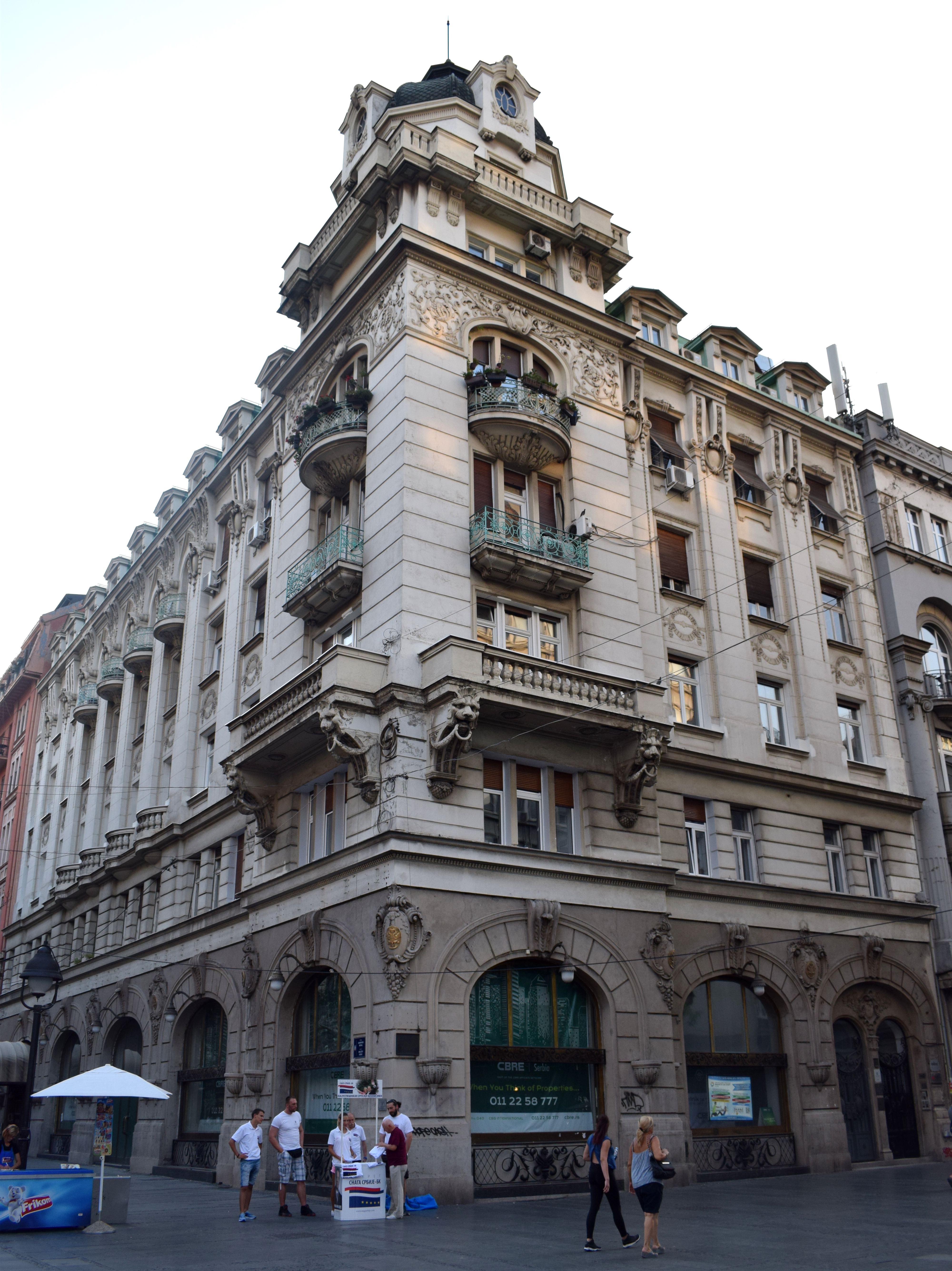 Popcorn stands line up along the center of Knez Mihailova in the summer. A perfect snack on a late August afternoon.
Popcorn stands line up along the center of Knez Mihailova in the summer. A perfect snack on a late August afternoon.
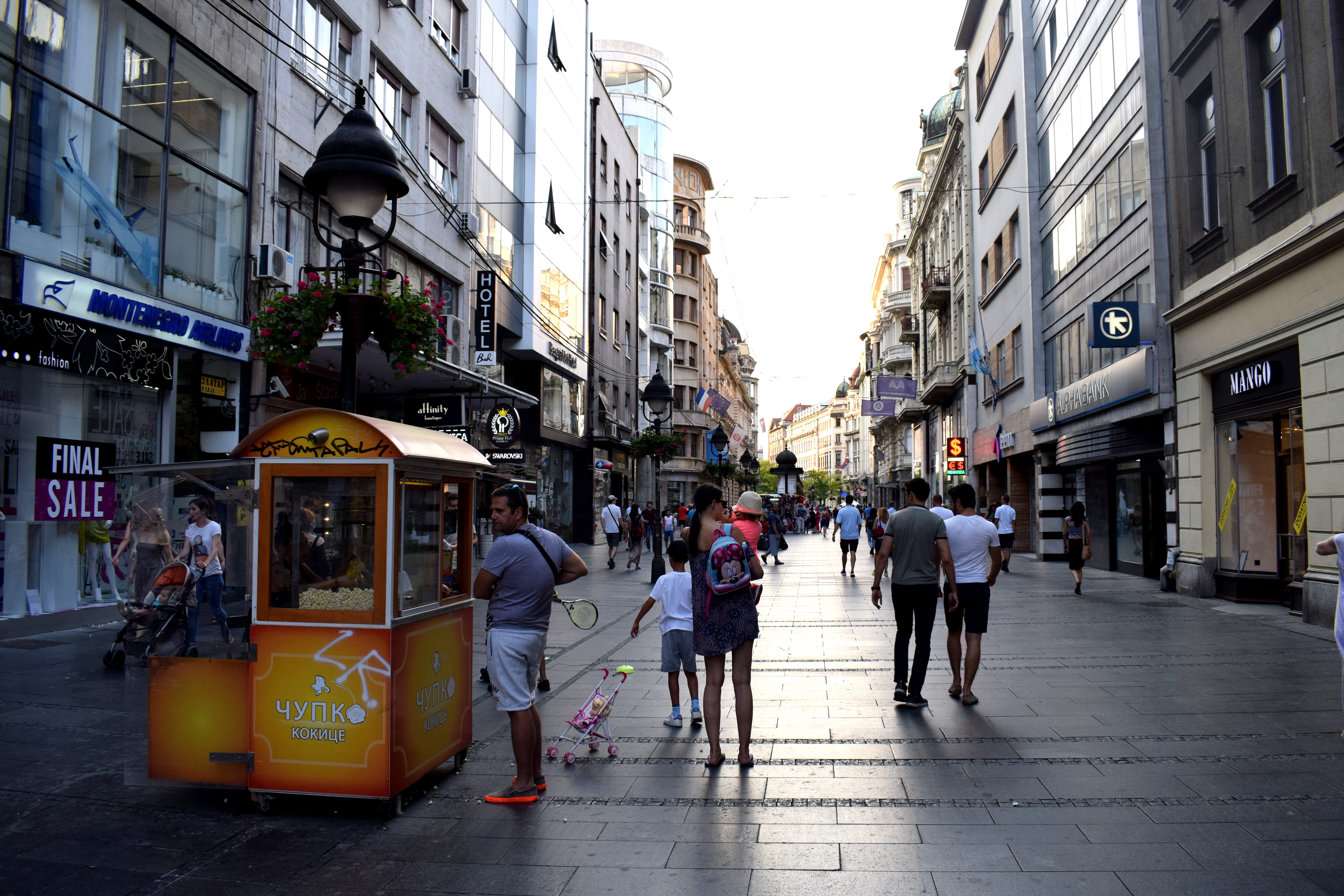 If popcorn is too unhealthy, corn on the cob is also available.
If popcorn is too unhealthy, corn on the cob is also available.
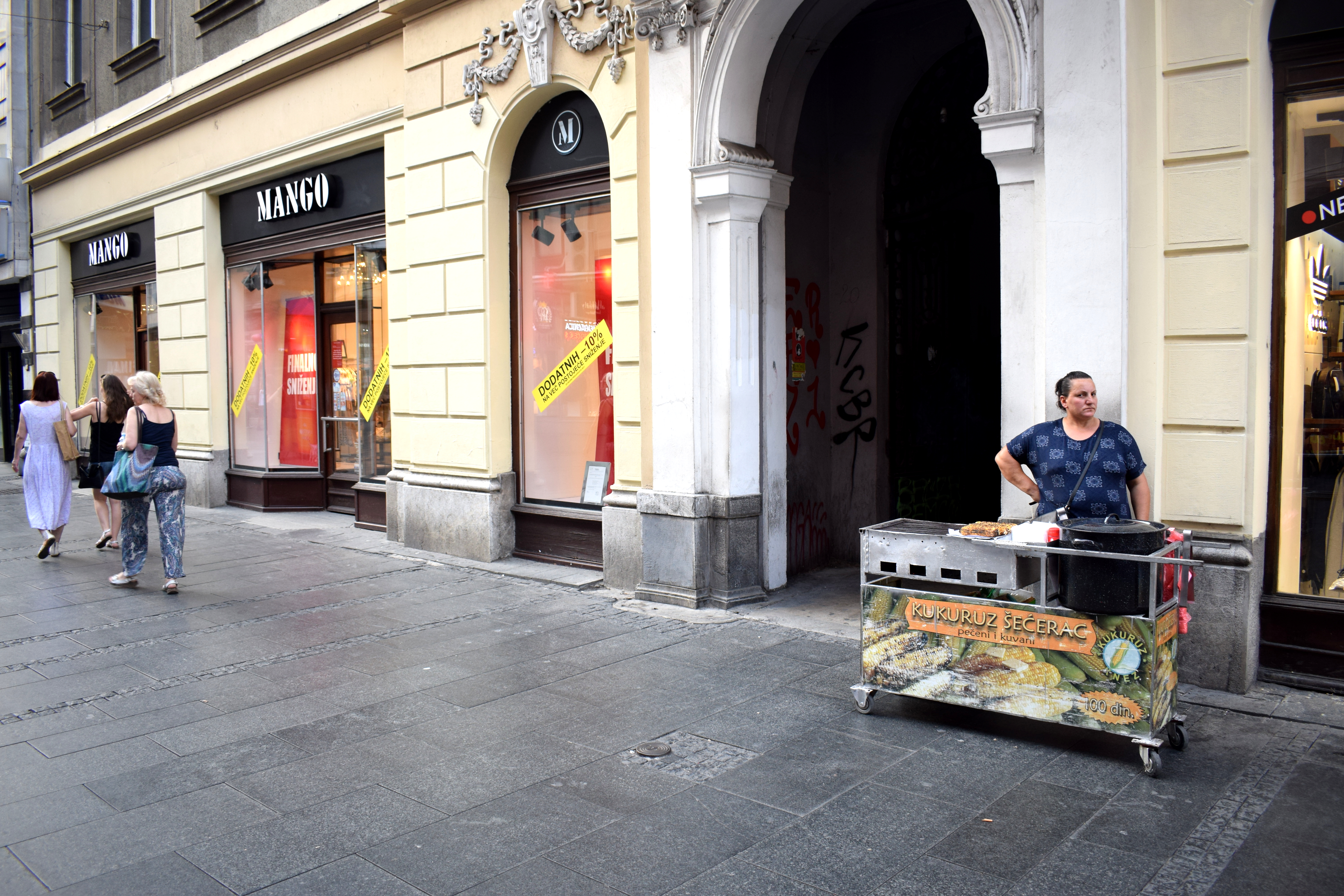 Many of the buildings on Knez Mihailova have the year they were built engraved on them. This building was erected in 1883.
Many of the buildings on Knez Mihailova have the year they were built engraved on them. This building was erected in 1883.
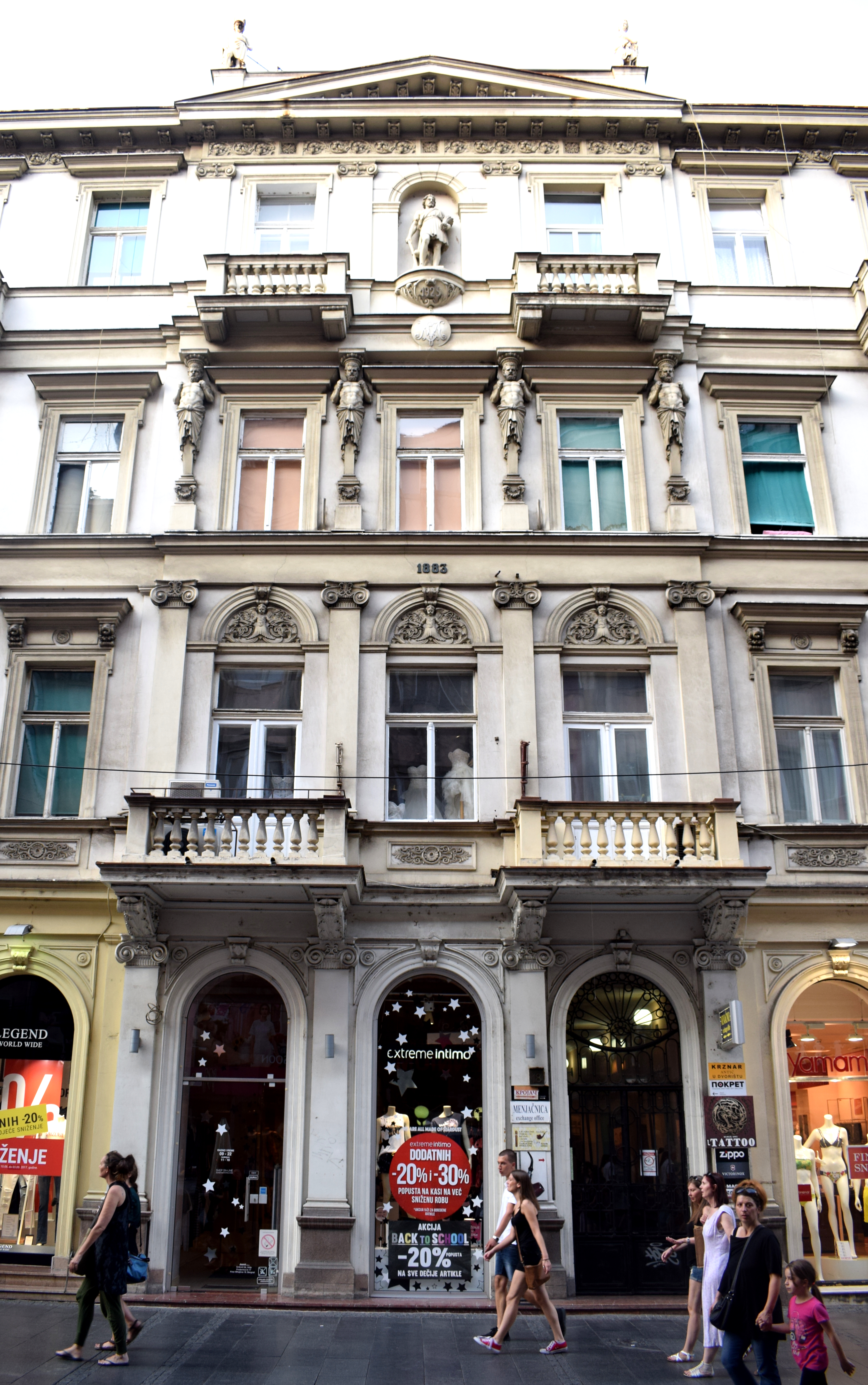 Belgrade is a city of cafes. The country has a high unemployment rate, especially among the young. This means cafes are filled with people morning, day and night chatting instead of working. Where they get the money to go to cafes is a mystery, but it helps that prices are generally cheap.
Belgrade is a city of cafes. The country has a high unemployment rate, especially among the young. This means cafes are filled with people morning, day and night chatting instead of working. Where they get the money to go to cafes is a mystery, but it helps that prices are generally cheap.
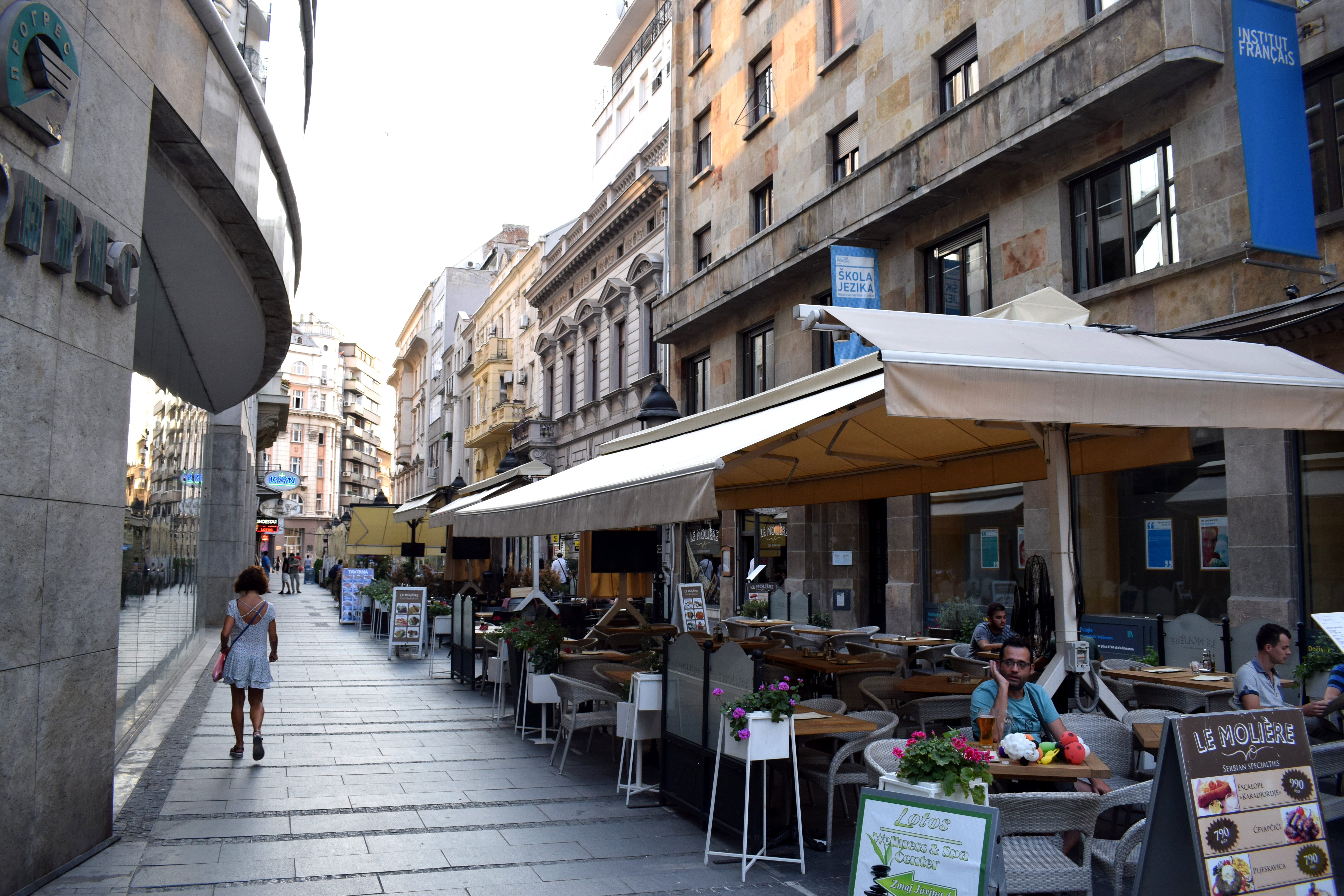 Stunning balconies and rooftops.
Stunning balconies and rooftops.
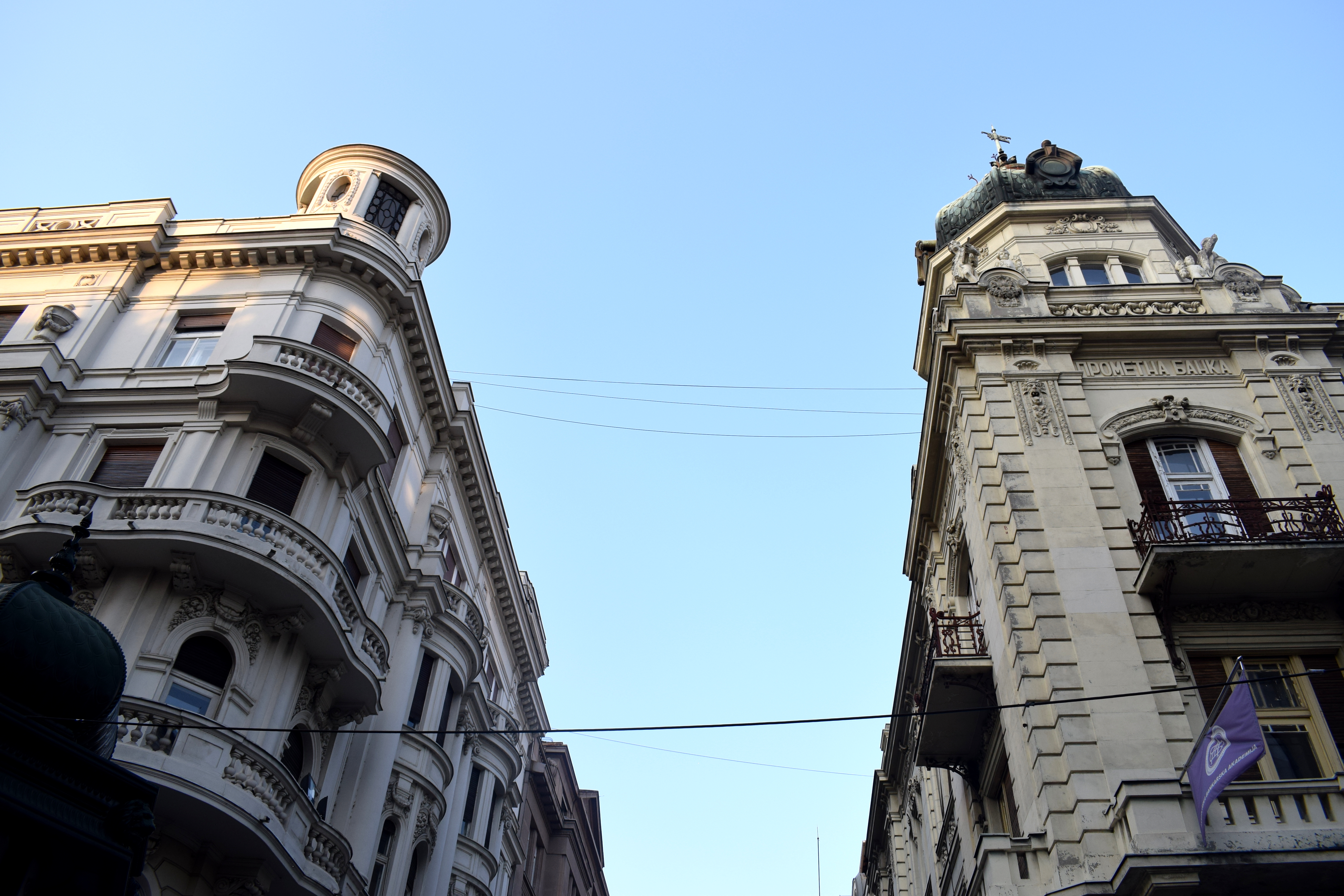 Colorful flowers decorate the lamp posts in the summer.
Colorful flowers decorate the lamp posts in the summer.
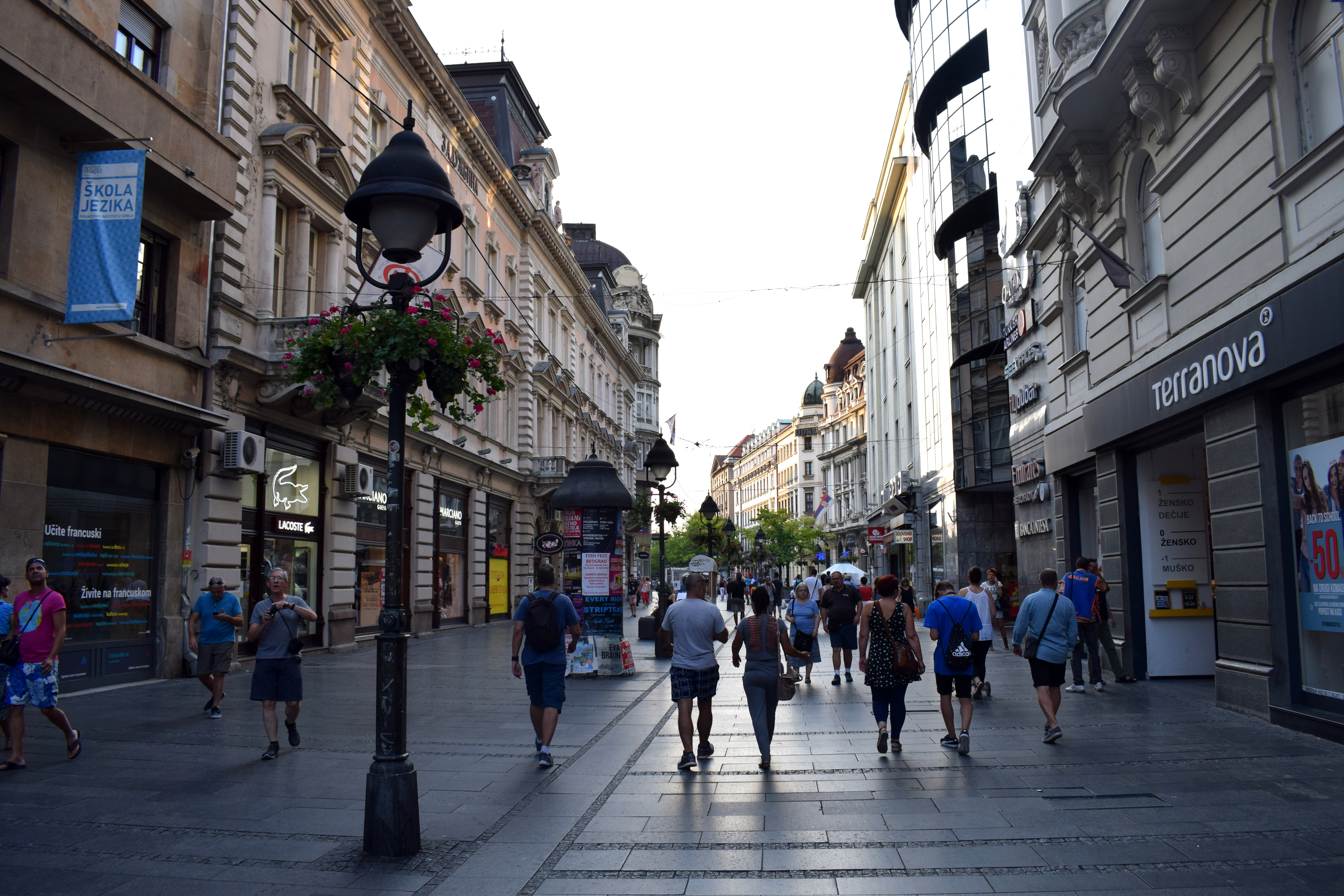 Delijska Cesma (Delija Fountain) is located in the middle of Knez Mihailova. Originally built in 1843, it was destroyed and rebuilt in 1889 and then again destroyed in 1913 when the Serbian Academy for Sciences and Art was built. It was gone for most of the postwar communist period, but due to popular demand the city decided to reconstruct it according to the old model in 1987.
Delijska Cesma (Delija Fountain) is located in the middle of Knez Mihailova. Originally built in 1843, it was destroyed and rebuilt in 1889 and then again destroyed in 1913 when the Serbian Academy for Sciences and Art was built. It was gone for most of the postwar communist period, but due to popular demand the city decided to reconstruct it according to the old model in 1987.
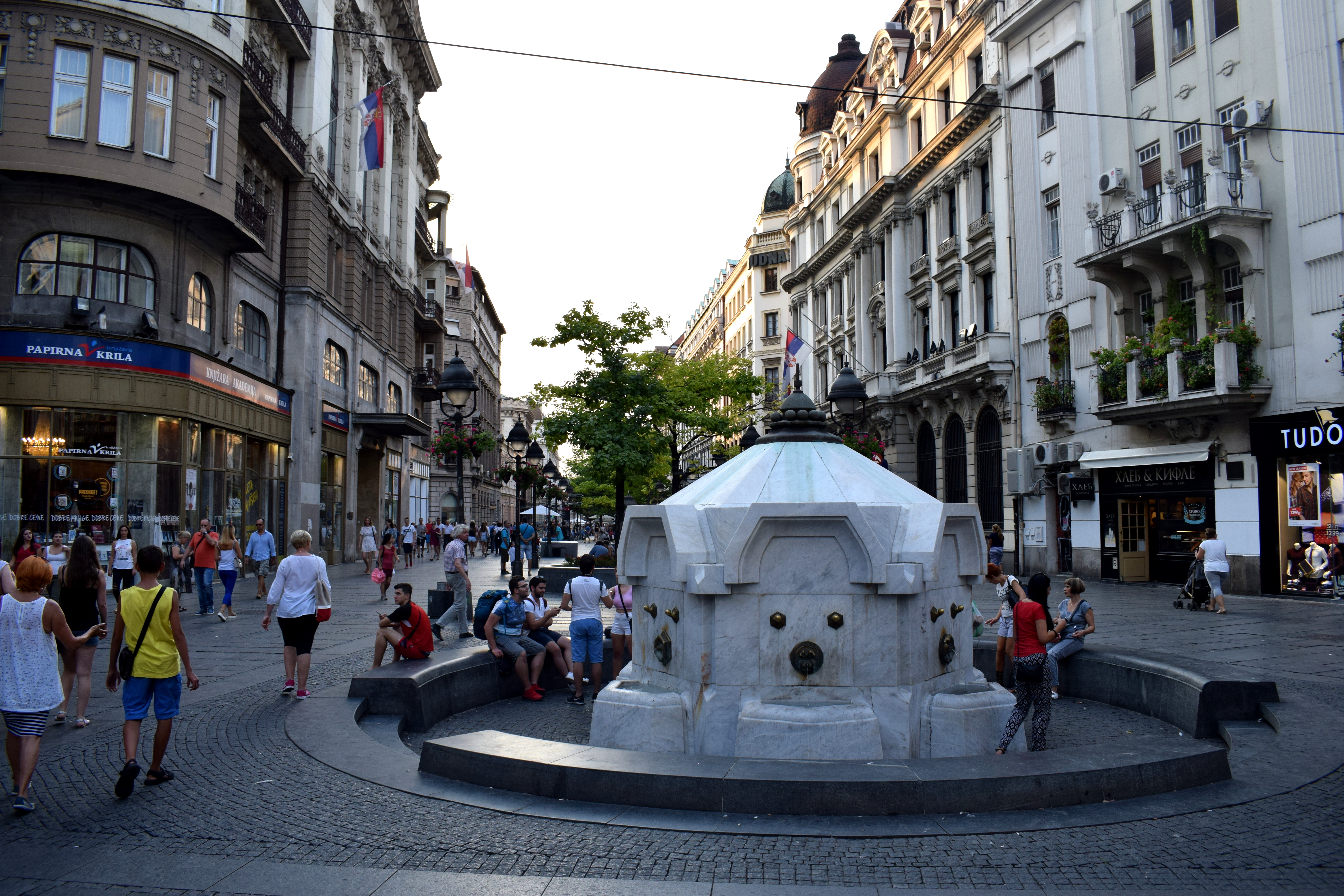 Serbians are very fond of flowers and often turn their balconies into de-facto outdoor gardens in the summer. Just look at the balconies on the right.
Serbians are very fond of flowers and often turn their balconies into de-facto outdoor gardens in the summer. Just look at the balconies on the right.
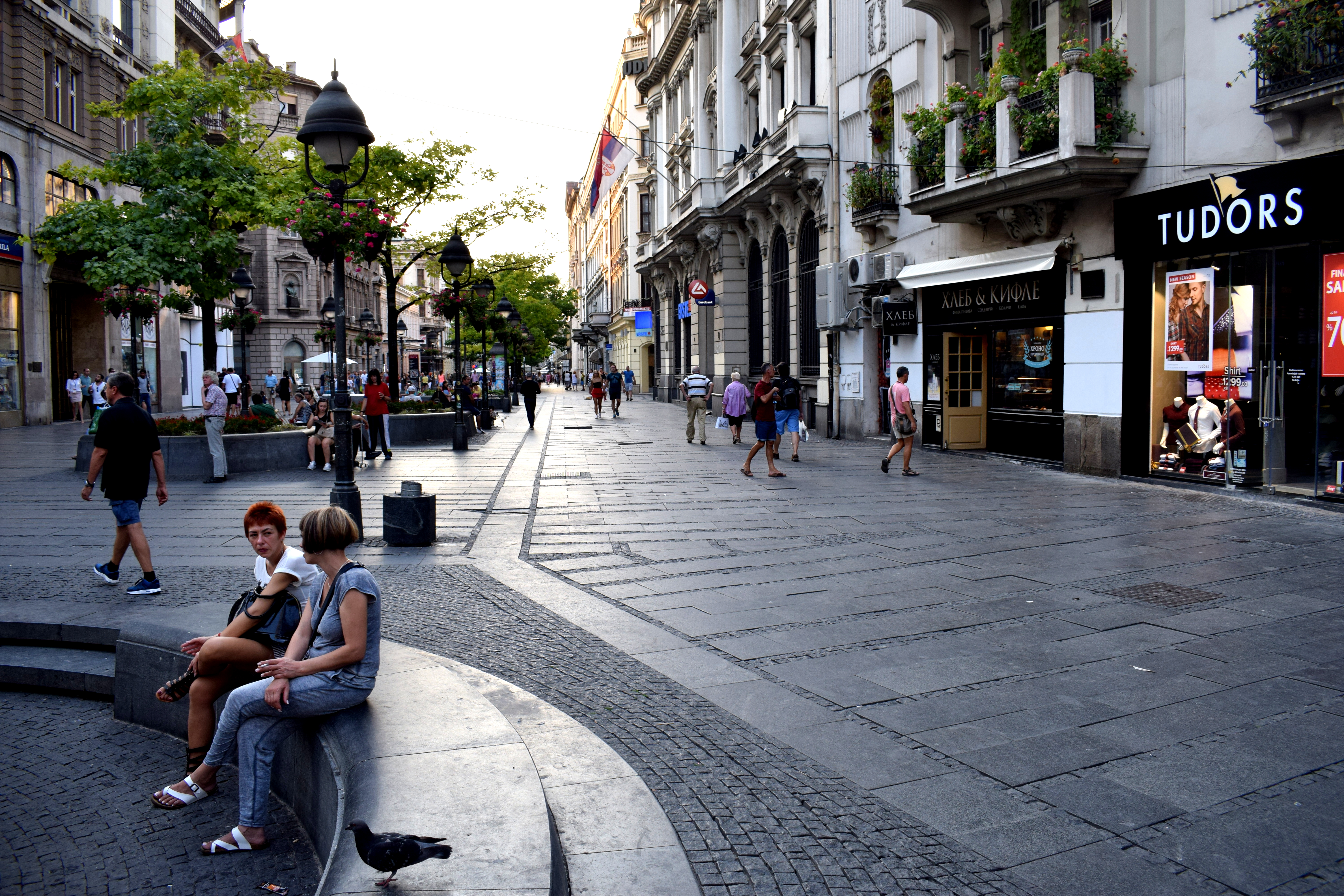 The Delijska fountain is located in front of the Nikola Spasic building, built in 1889. Nikola Spasic was a well-known Belgrade merchant who lived from 1840-1916 and funded many infrastructure projects around the city in the early 20th century. He was President of the Belgrade Stock Exchange and a member of the Kingdom of Serbia’s National Bank Management Board.
The Delijska fountain is located in front of the Nikola Spasic building, built in 1889. Nikola Spasic was a well-known Belgrade merchant who lived from 1840-1916 and funded many infrastructure projects around the city in the early 20th century. He was President of the Belgrade Stock Exchange and a member of the Kingdom of Serbia’s National Bank Management Board.
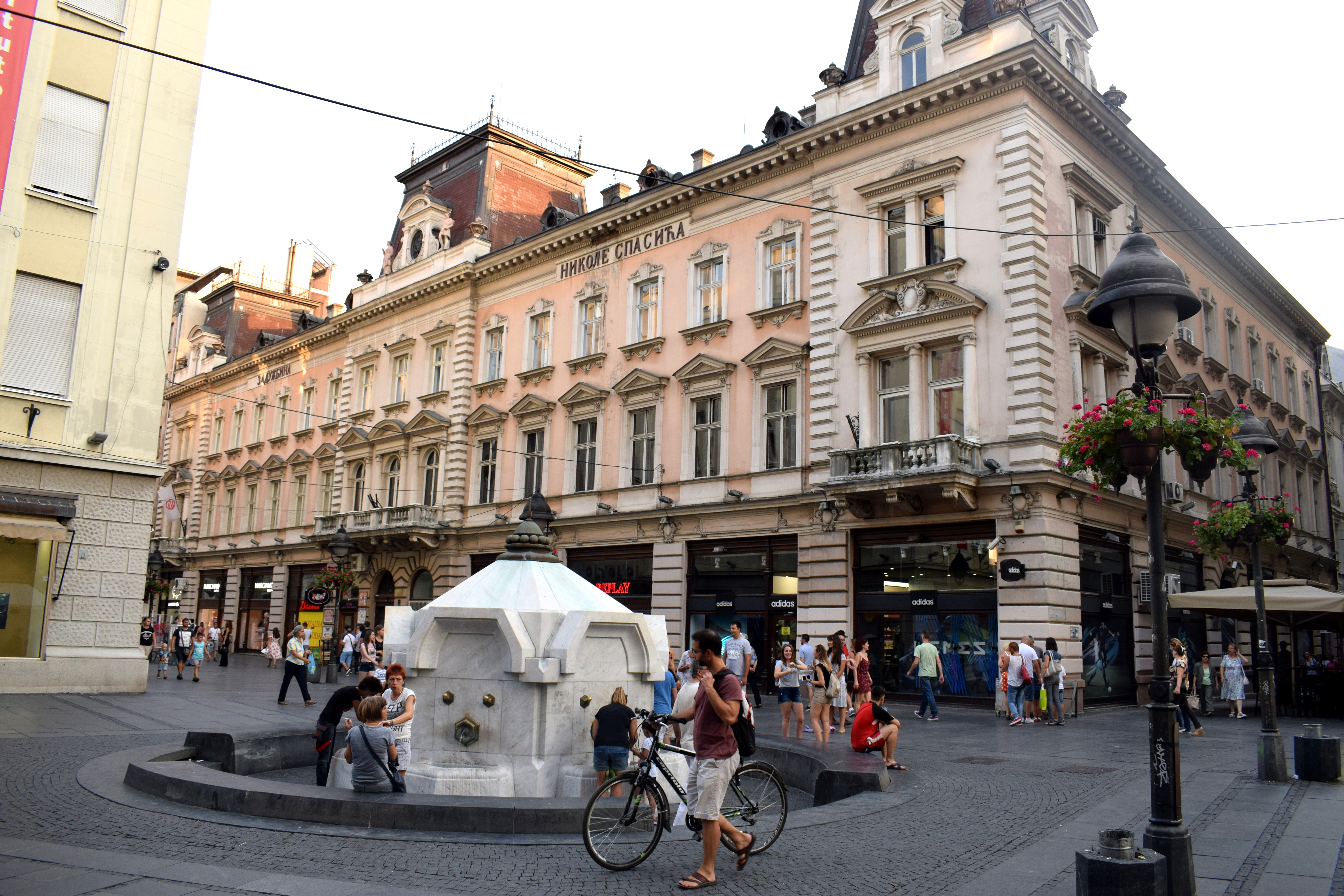 Two old men sitting on a bench, probably debating about politics.
Two old men sitting on a bench, probably debating about politics.
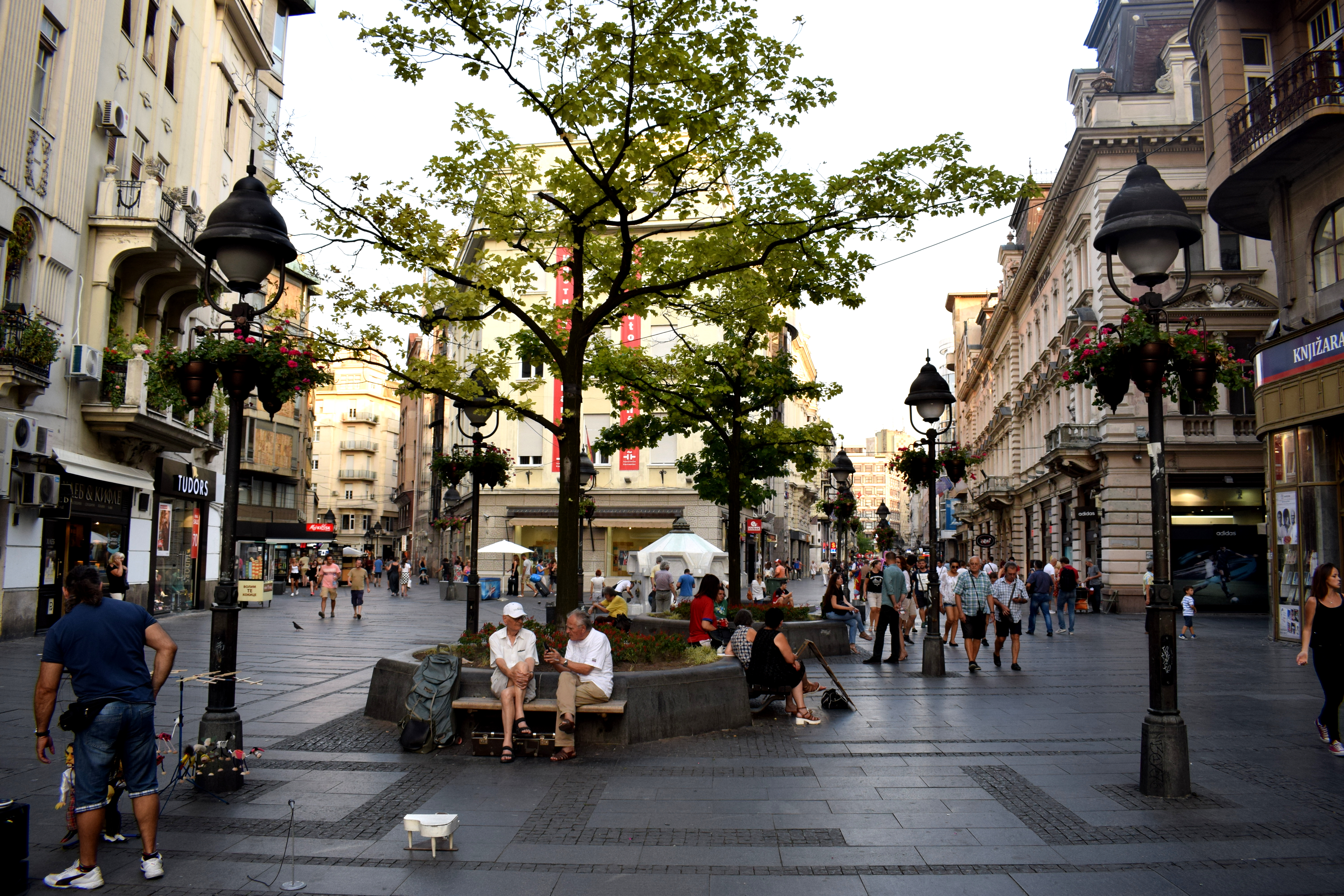 A women attending to her child.
A women attending to her child.
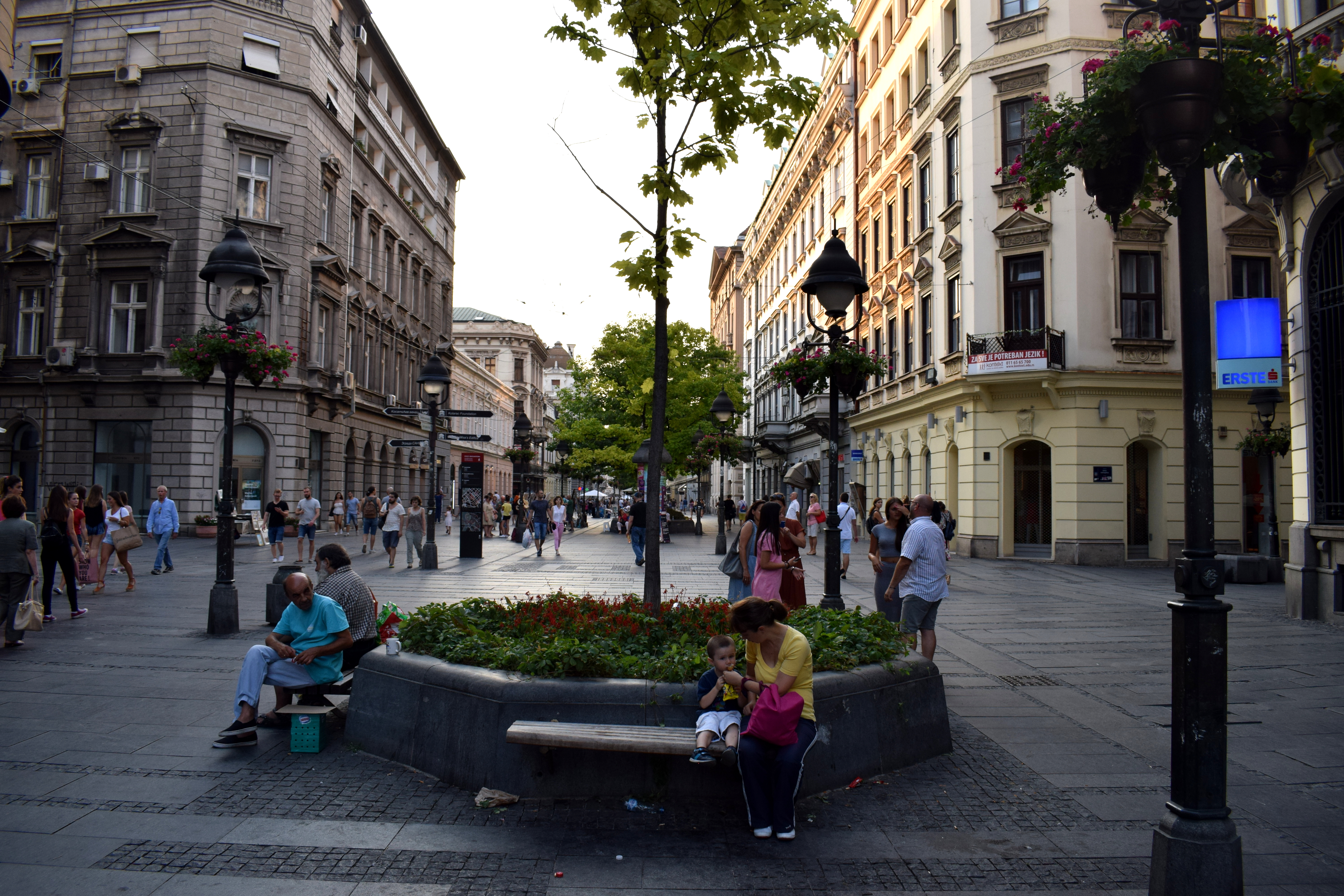 The Serbian Academy for Science and Art, or SANU building. This is the most prominent academic institution in Serbia. Established in 1841.
The Serbian Academy for Science and Art, or SANU building. This is the most prominent academic institution in Serbia. Established in 1841.
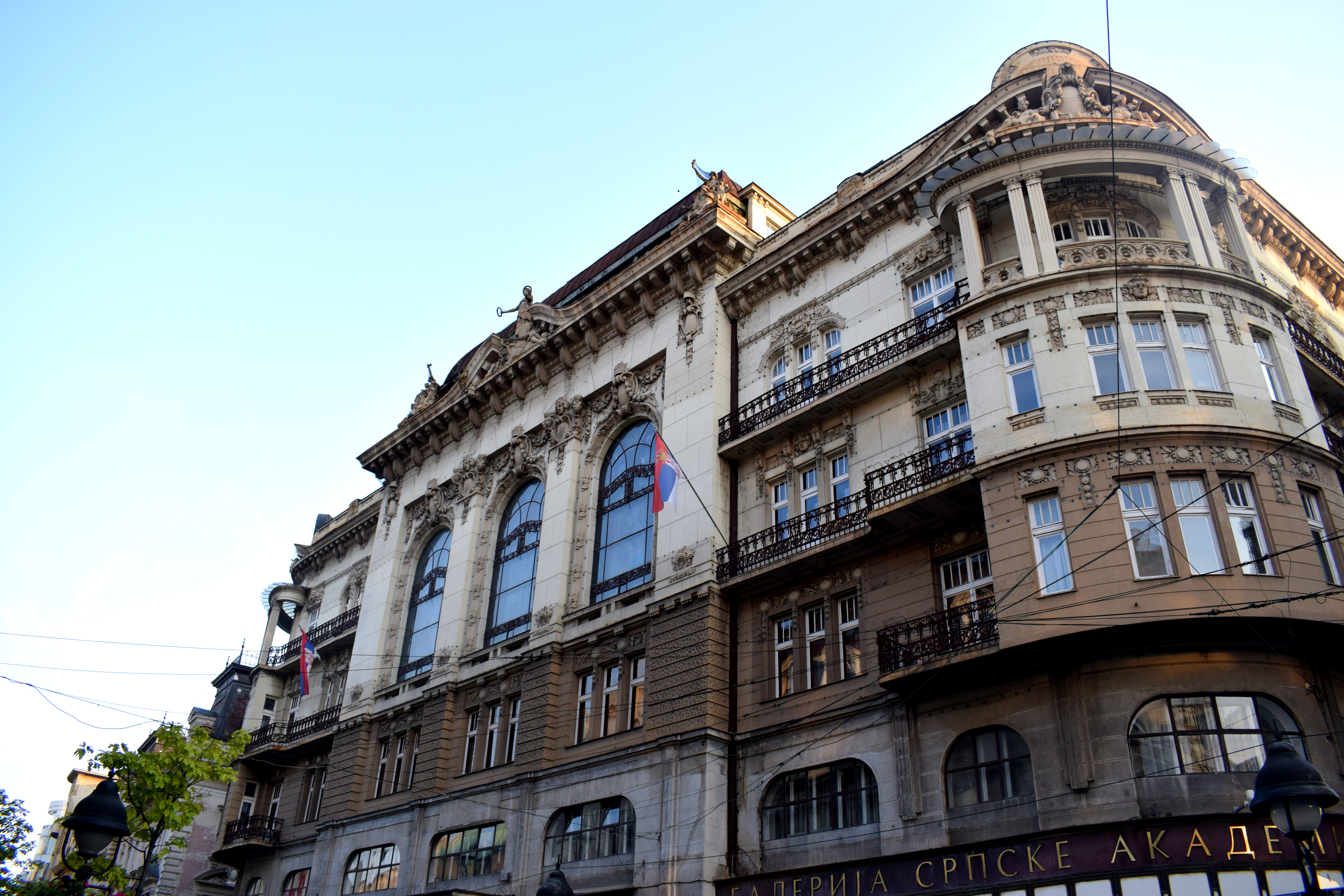 Towards the end of the street there are several areas where you can buy paintings from local artists and painters.
Towards the end of the street there are several areas where you can buy paintings from local artists and painters.
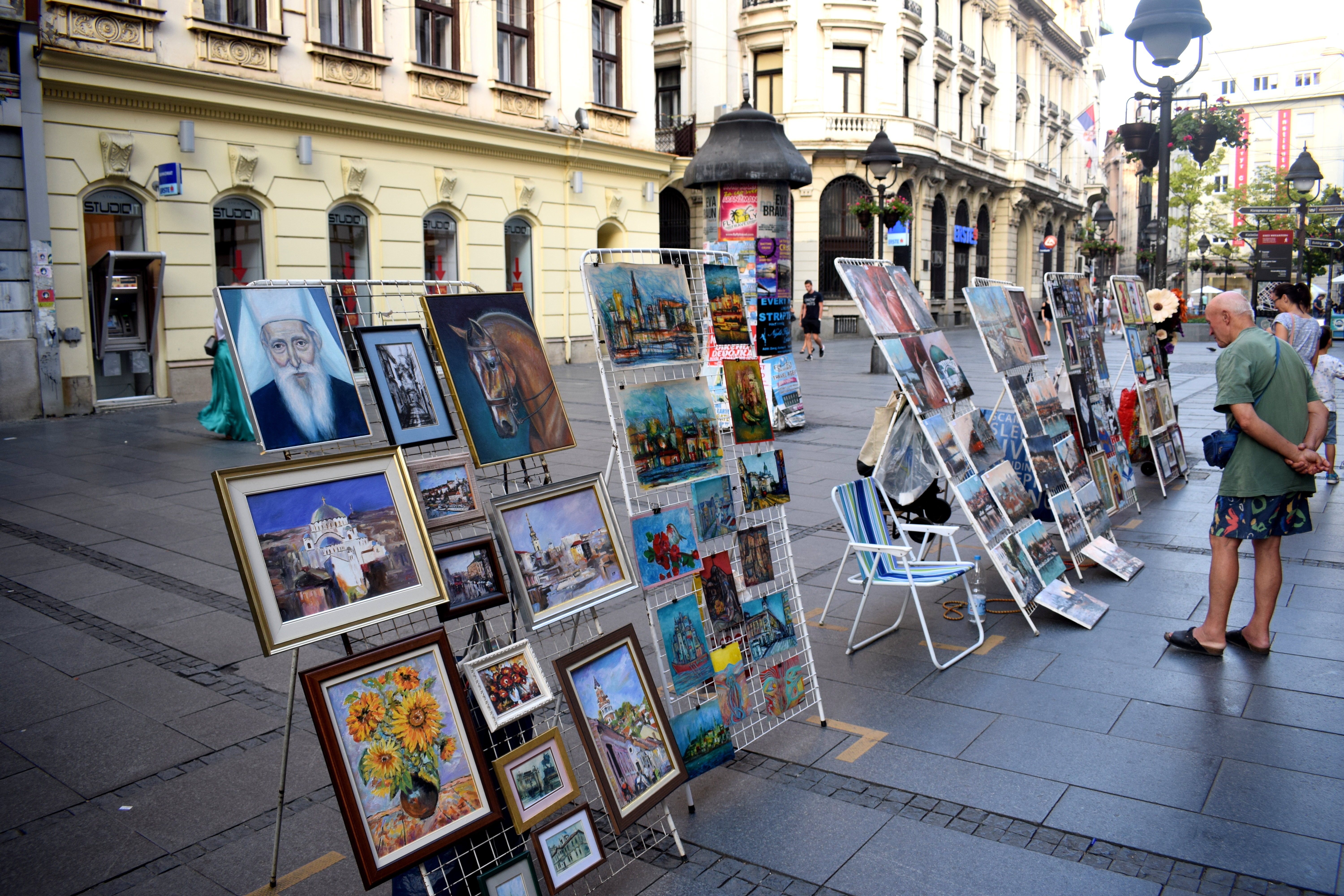 There are a few areas of graffiti on Knez Mihailova, but in recent years the city has made good progress on cleaning the center up from this.
There are a few areas of graffiti on Knez Mihailova, but in recent years the city has made good progress on cleaning the center up from this.
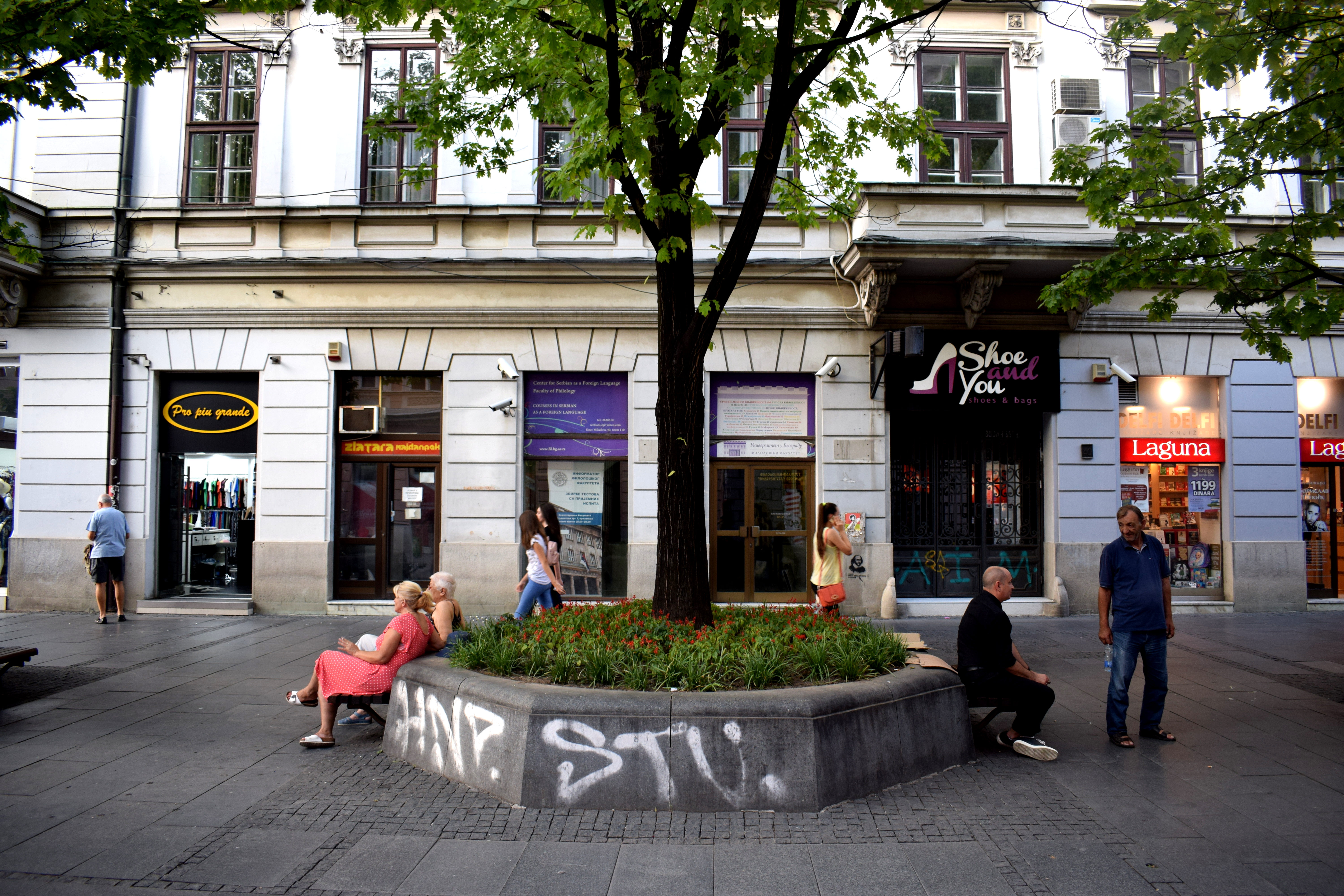 There’s a decent amount of trees in the center.
There’s a decent amount of trees in the center.
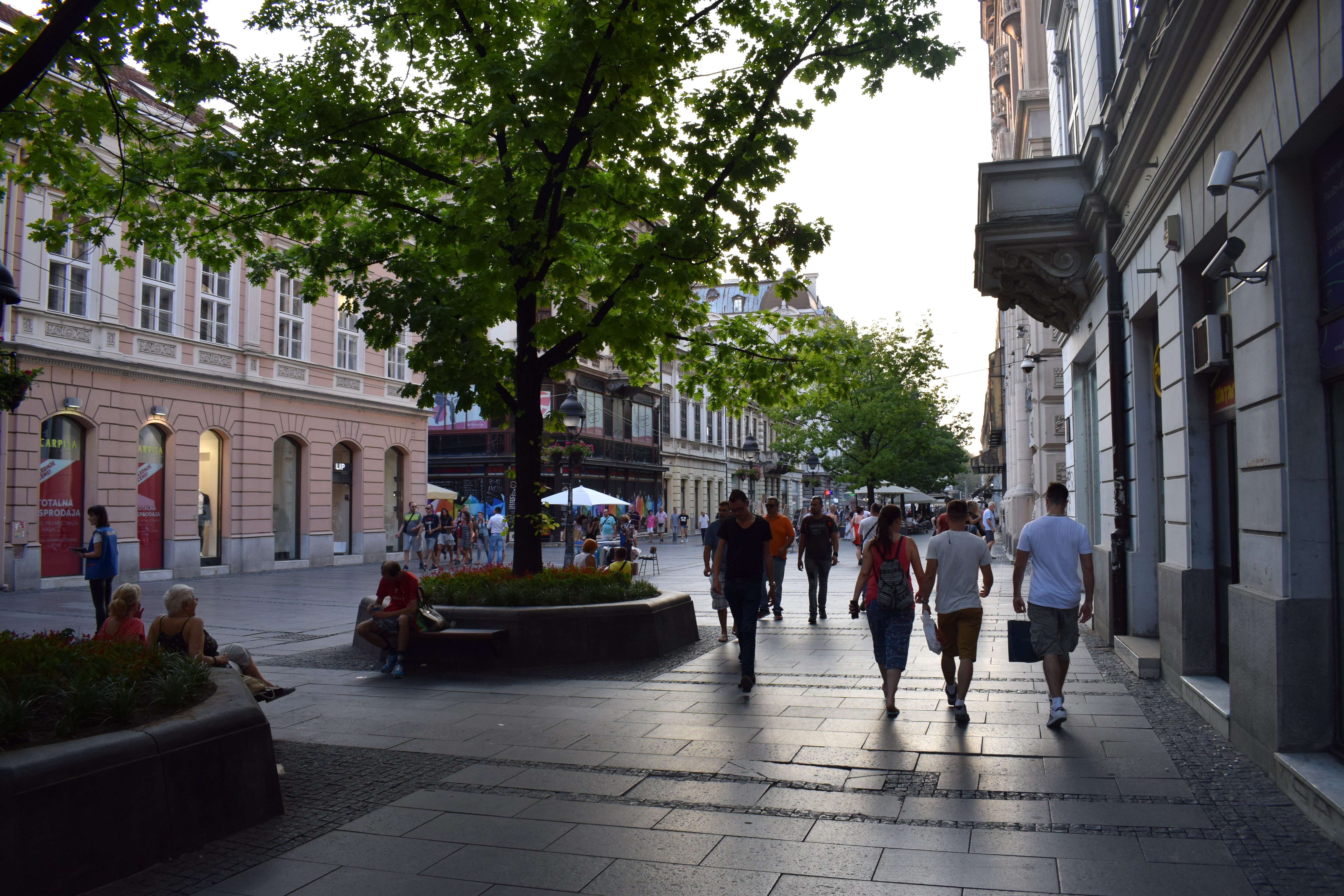 Used books sold on smaller side streets. You can find some real gems here, books that were published before WWII and during communist rule.
Used books sold on smaller side streets. You can find some real gems here, books that were published before WWII and during communist rule.
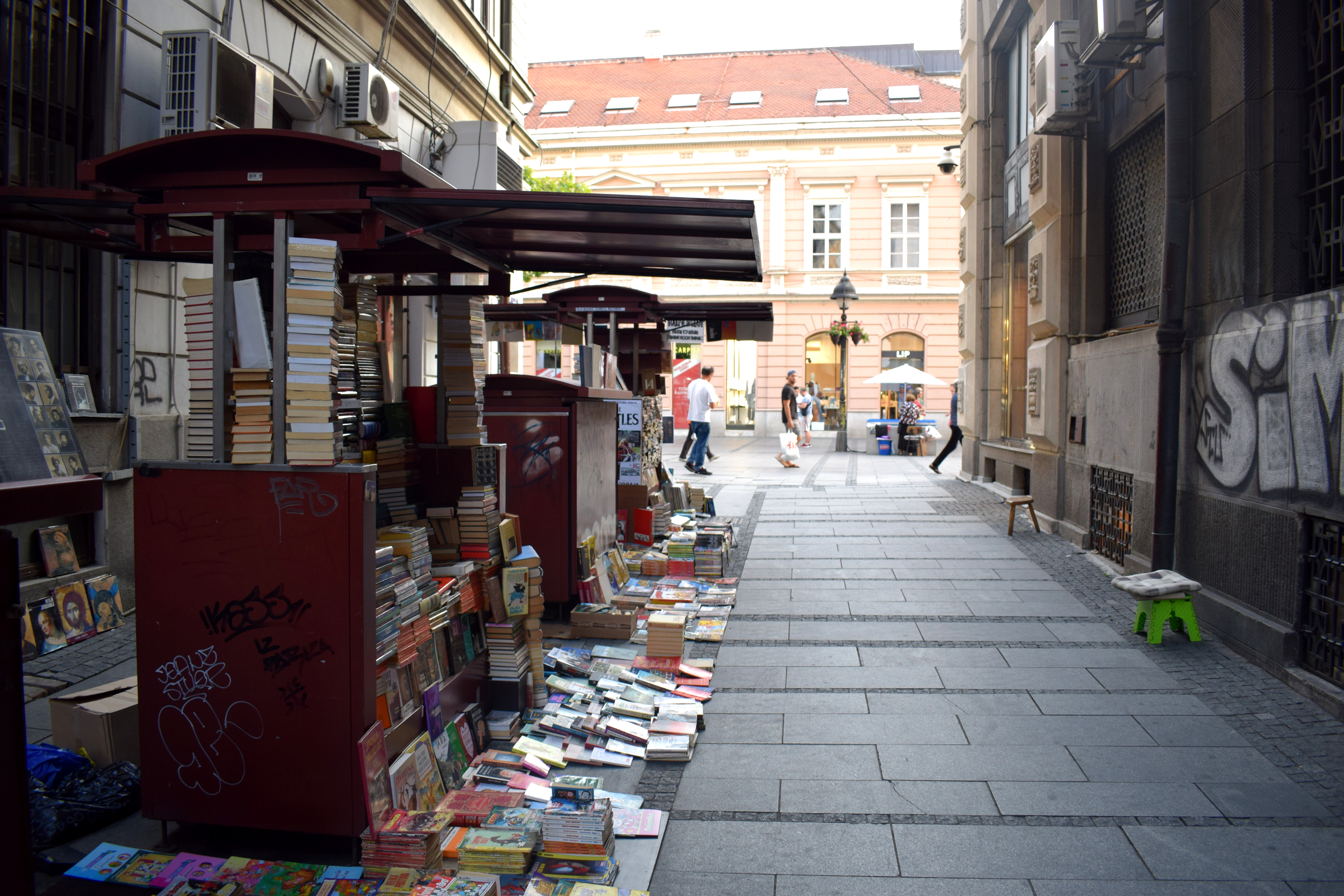 People relaxing in cafes to have a drink and smoke. The coffee they order may be small, but they sip it slow. Nobody is in a hurry here.
People relaxing in cafes to have a drink and smoke. The coffee they order may be small, but they sip it slow. Nobody is in a hurry here.
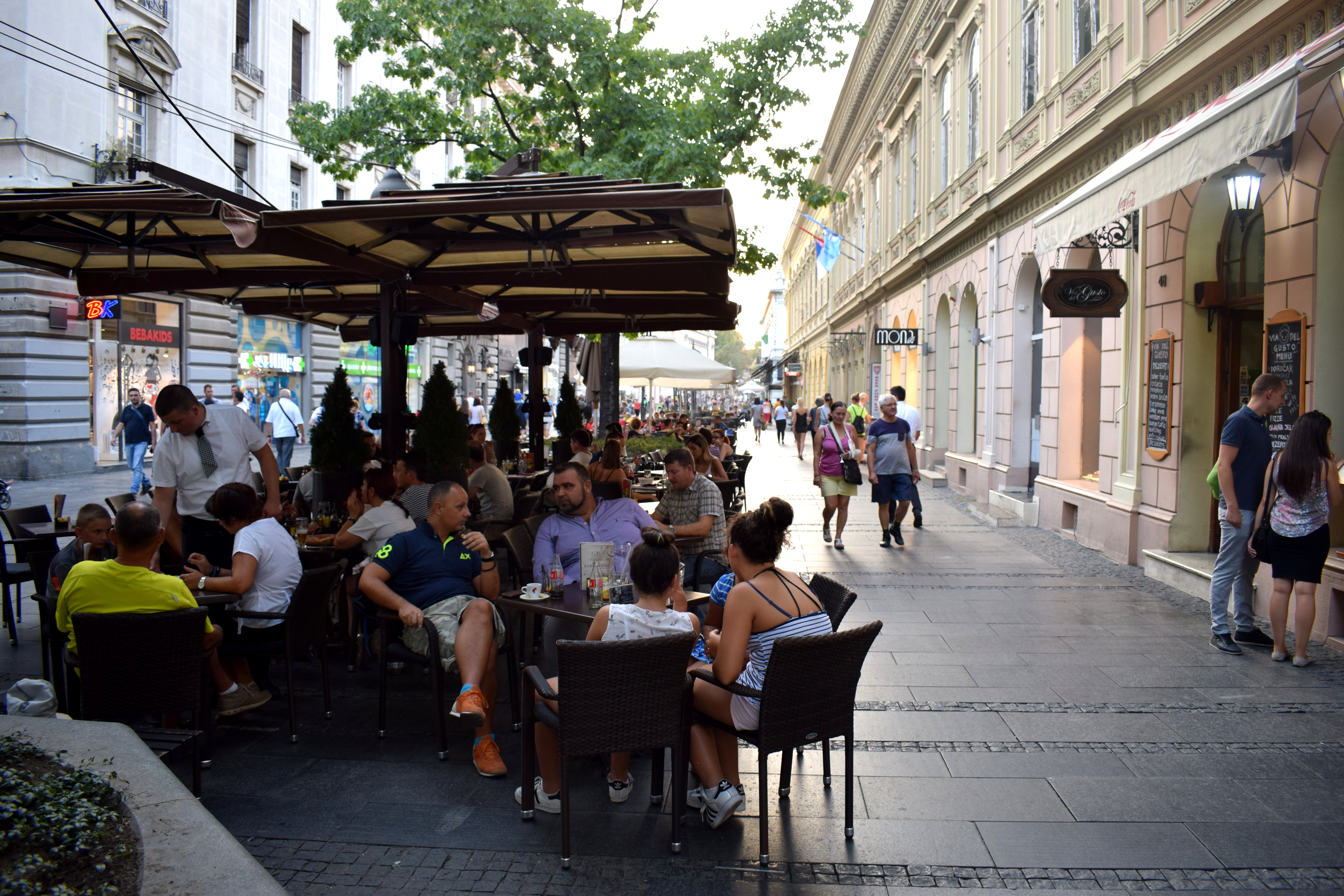 The occasional pope walking back home from work.
The occasional pope walking back home from work.
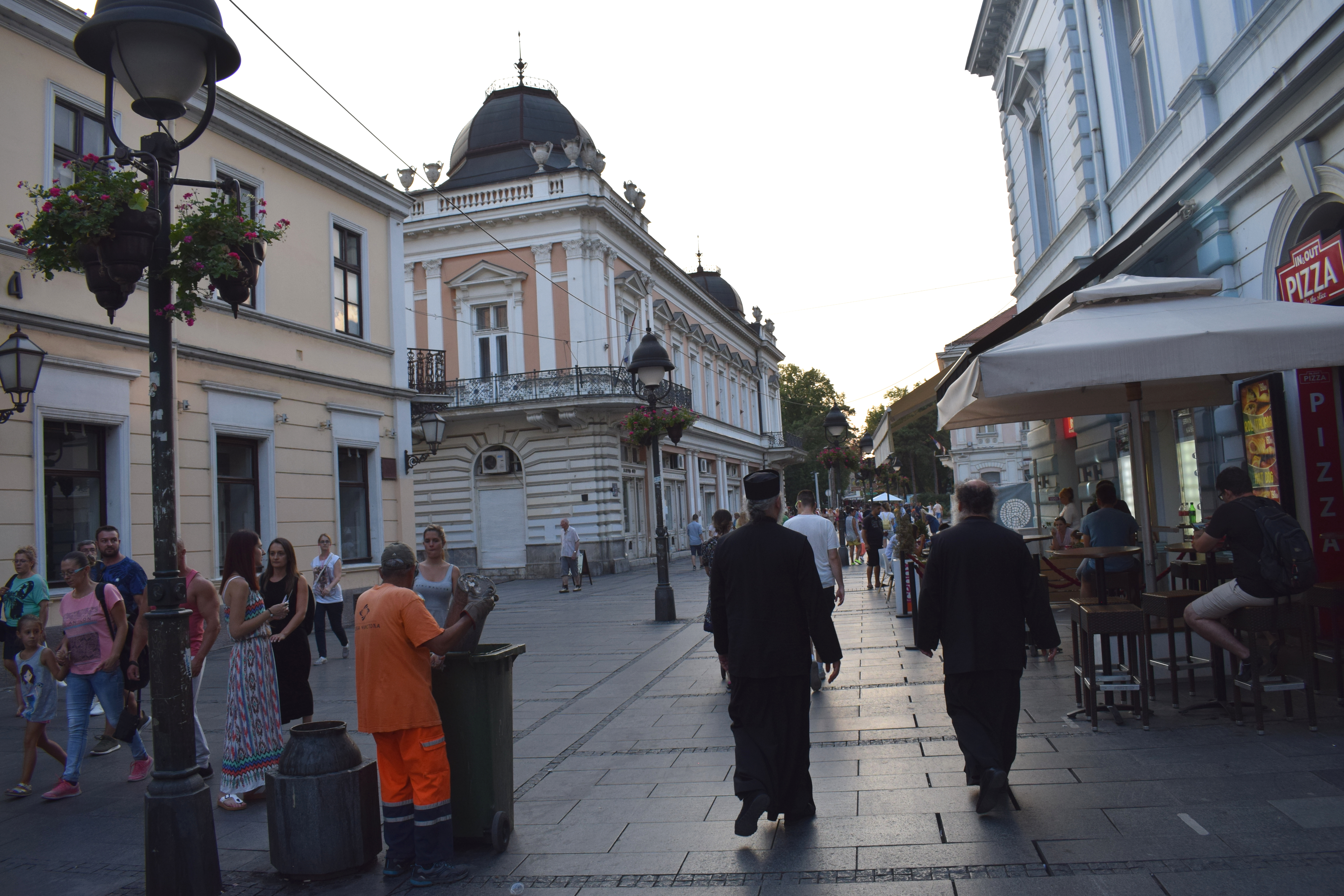 These are great.
These are great.
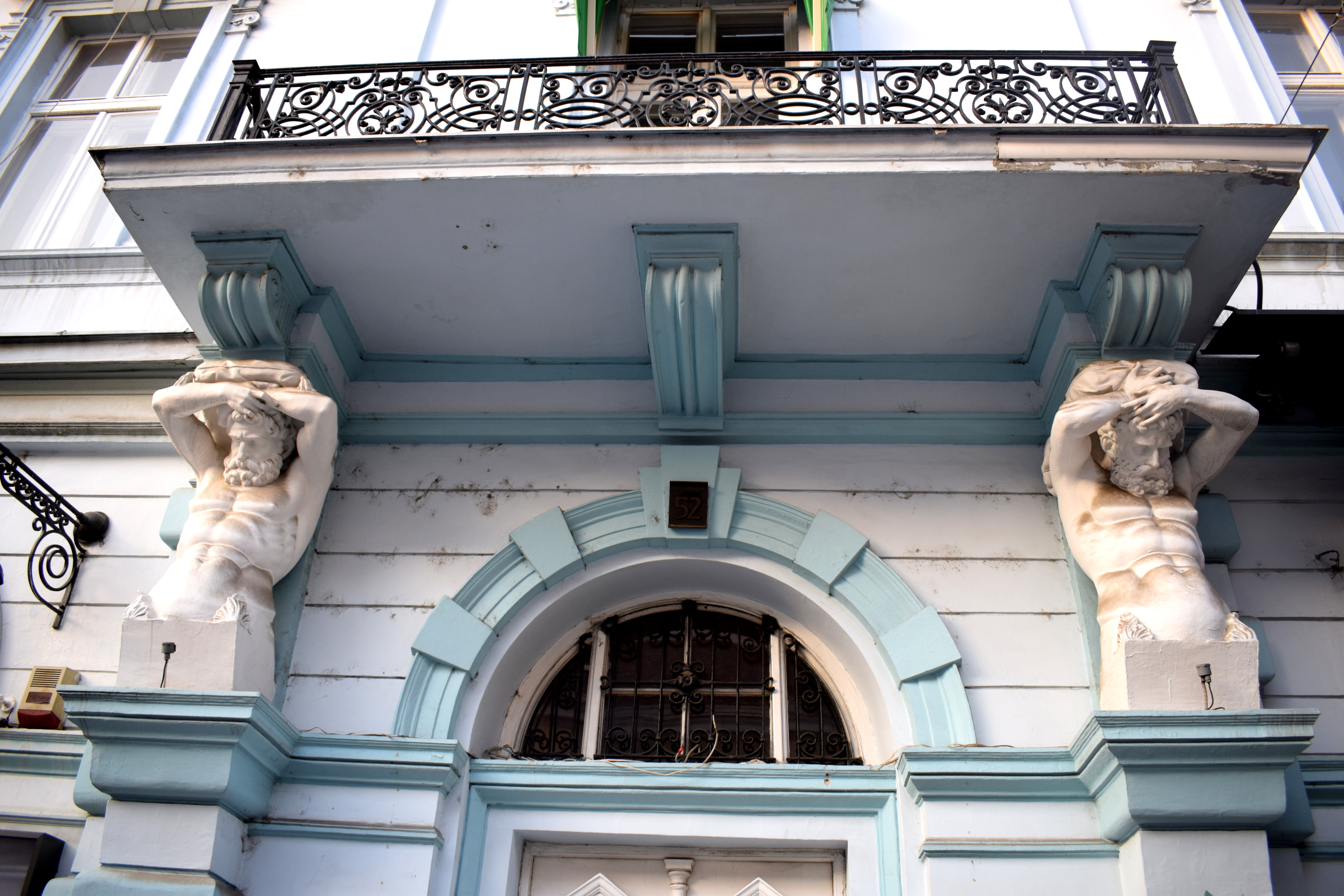 A look back on the street in the other direction as evening approaches.
A look back on the street in the other direction as evening approaches.
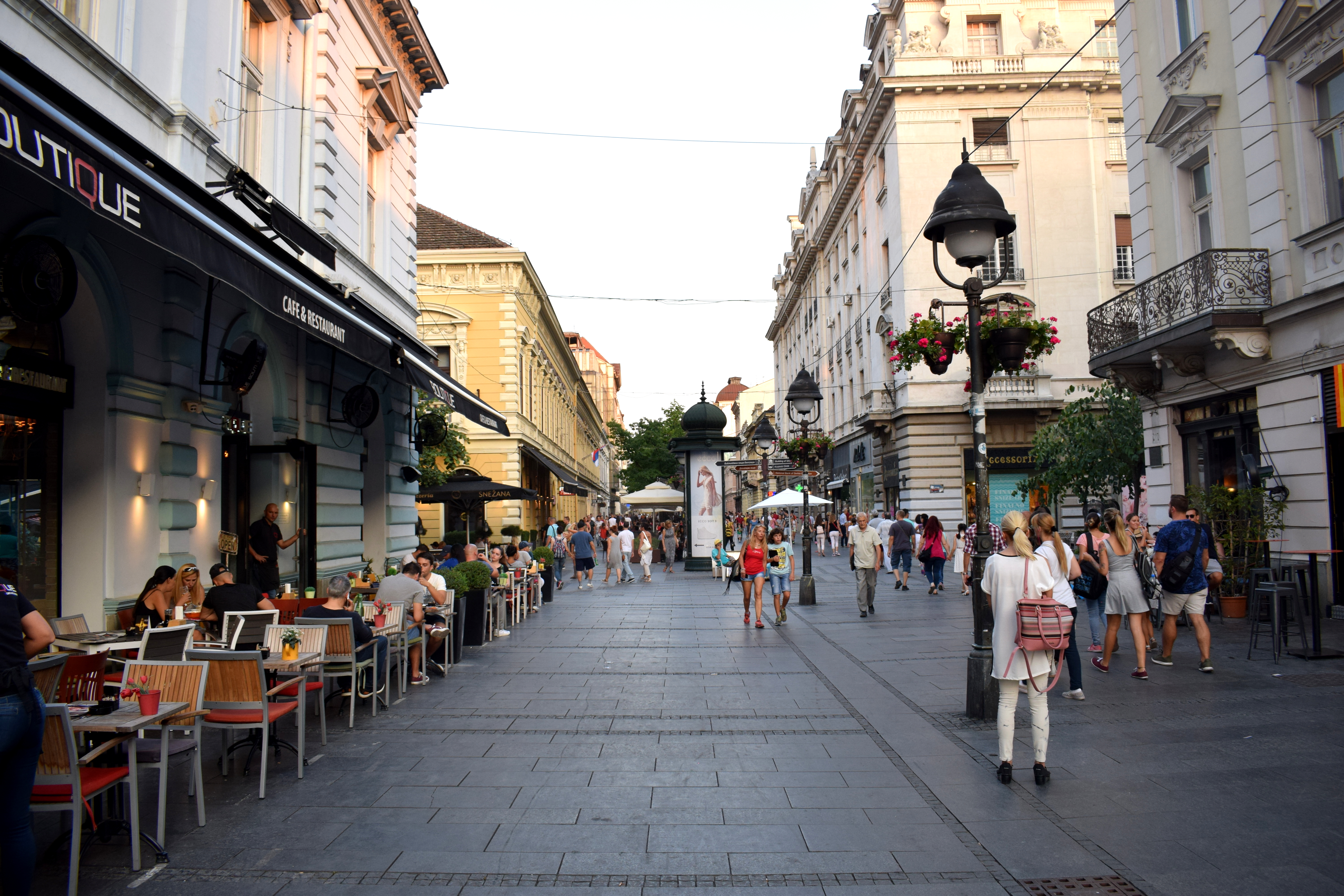 Another view in the other direction.
Another view in the other direction.
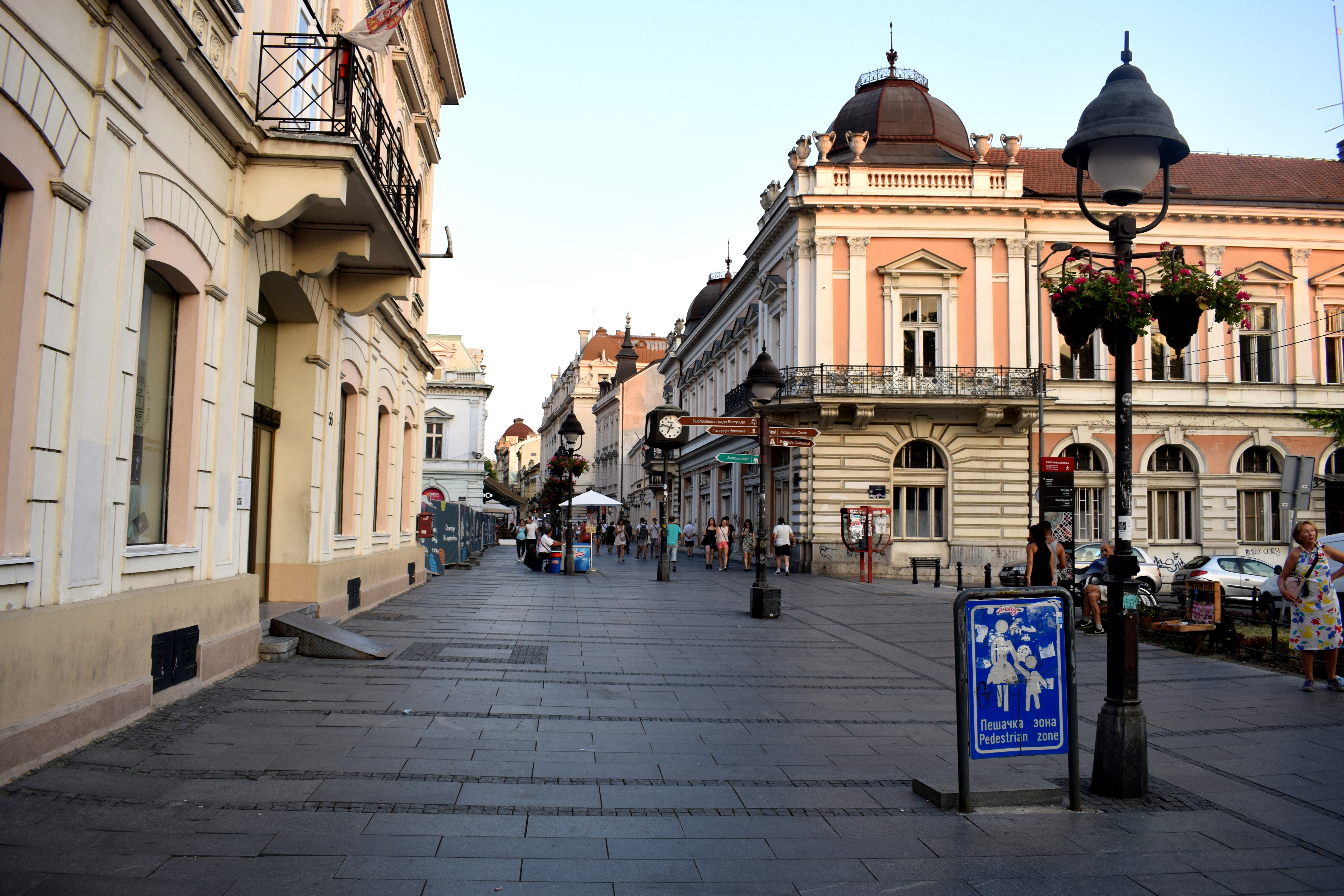 The end of Knez Mihailova and the start to Kalemegdan.
The end of Knez Mihailova and the start to Kalemegdan.
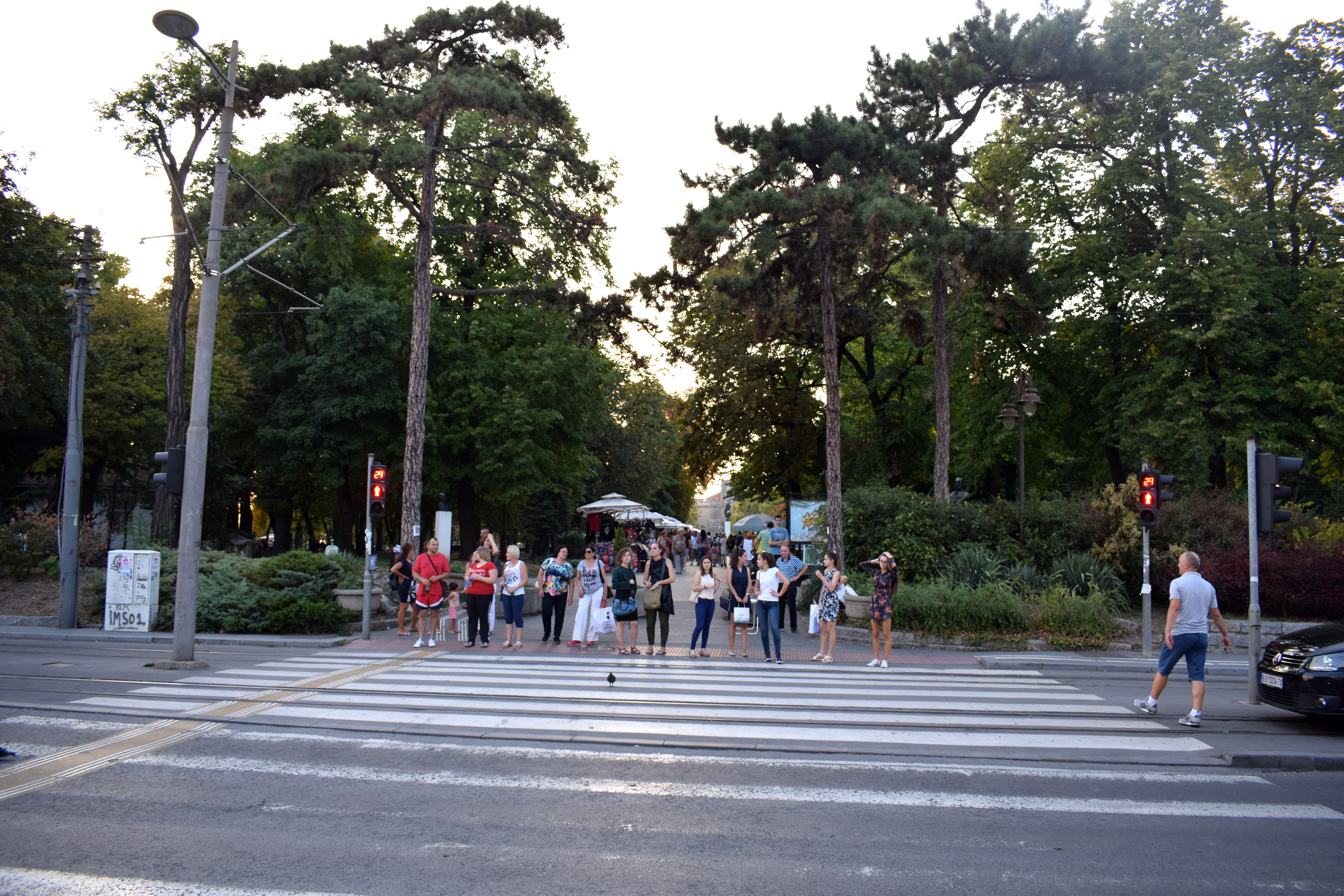 As mentioned earlier, a trip to Belgrade is incomplete without a walk down Knez Mihailova. It only takes about 15 minutes to walk from one end to the other, but really you should take your time. Knez Mihailova is a perfect place to sit down at a cafe for a coffee or grab a bite to eat. Once you reach the end of the street, you can walk further on to explore Belgrade’s Kalemegdan Park, one of the most beautiful urban parks in Europe with a stunning view of the Danube and Sava rivers.
As mentioned earlier, a trip to Belgrade is incomplete without a walk down Knez Mihailova. It only takes about 15 minutes to walk from one end to the other, but really you should take your time. Knez Mihailova is a perfect place to sit down at a cafe for a coffee or grab a bite to eat. Once you reach the end of the street, you can walk further on to explore Belgrade’s Kalemegdan Park, one of the most beautiful urban parks in Europe with a stunning view of the Danube and Sava rivers.
